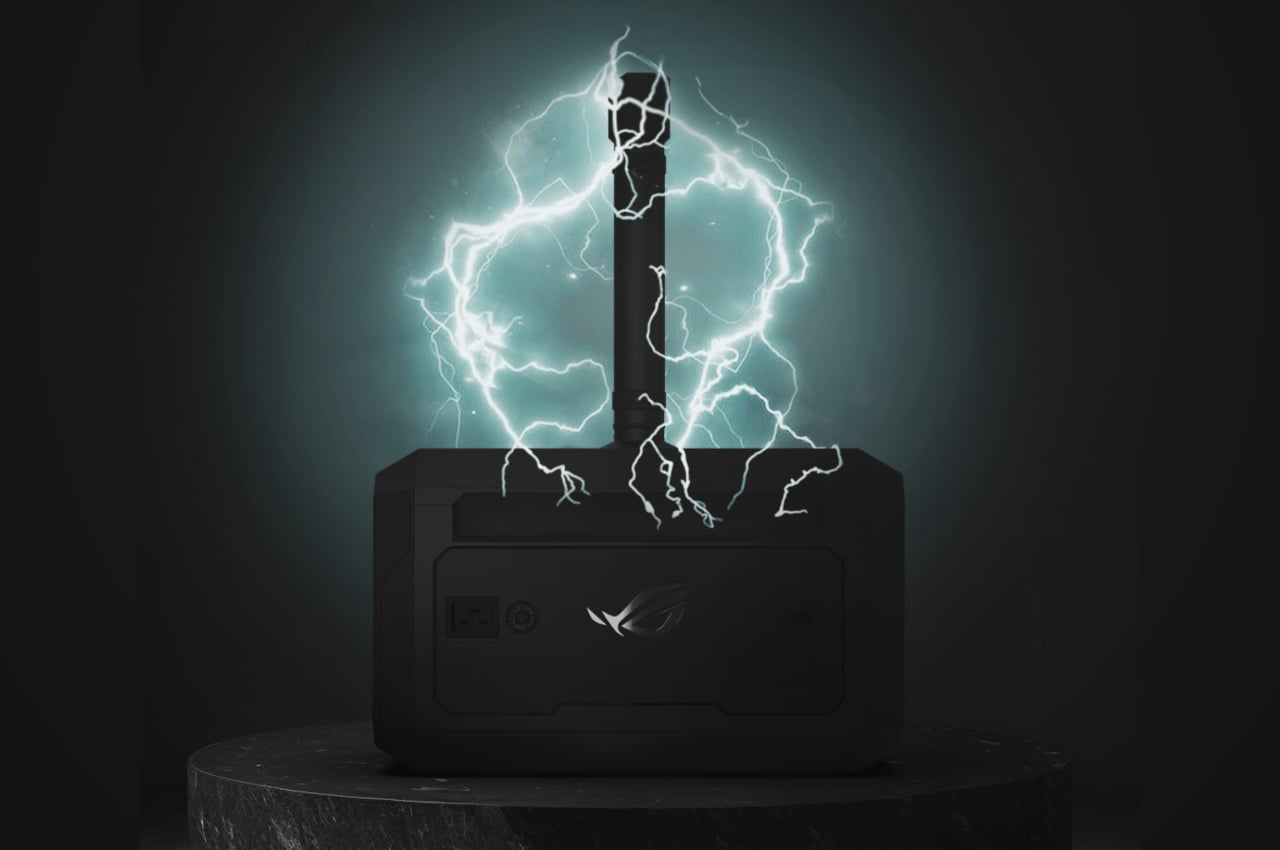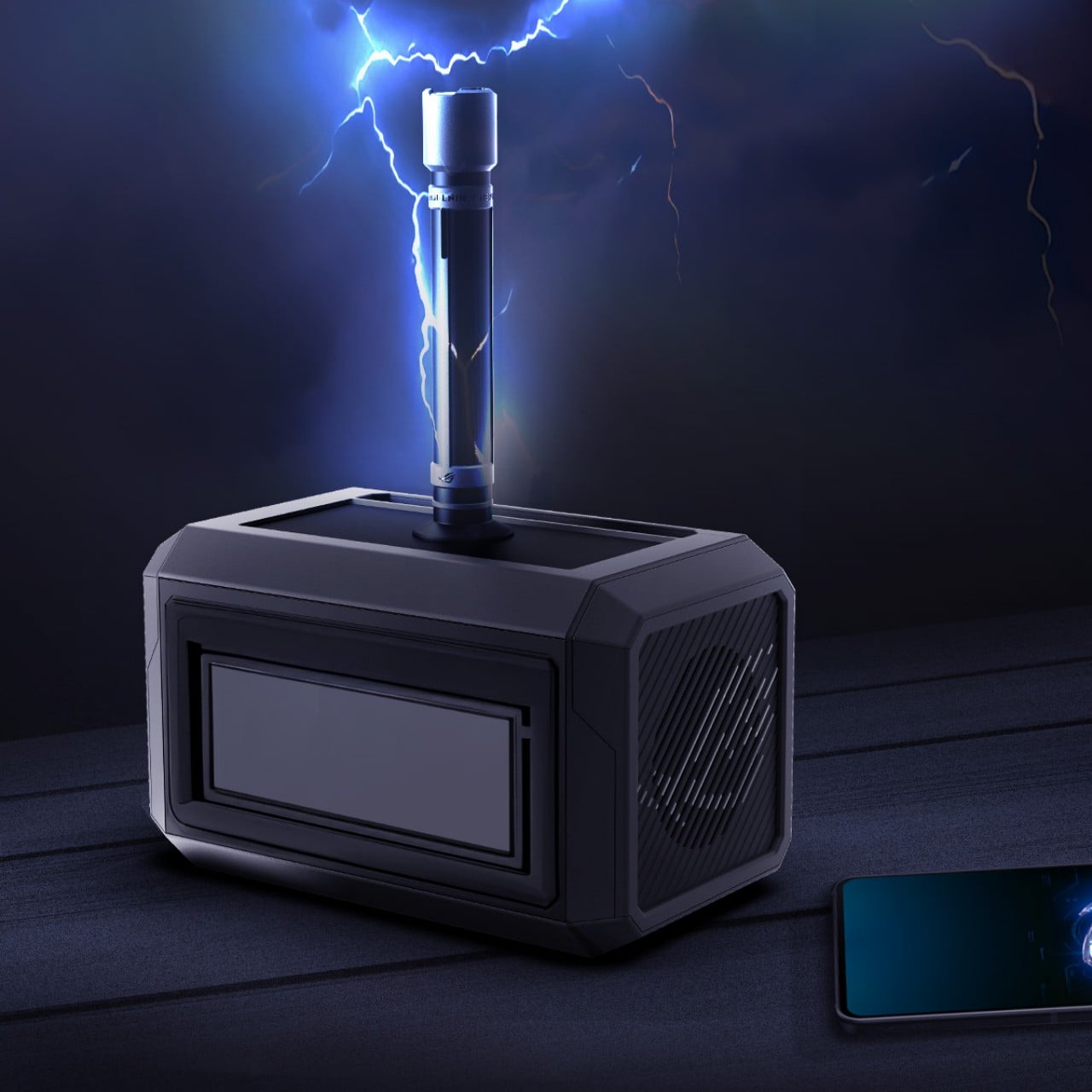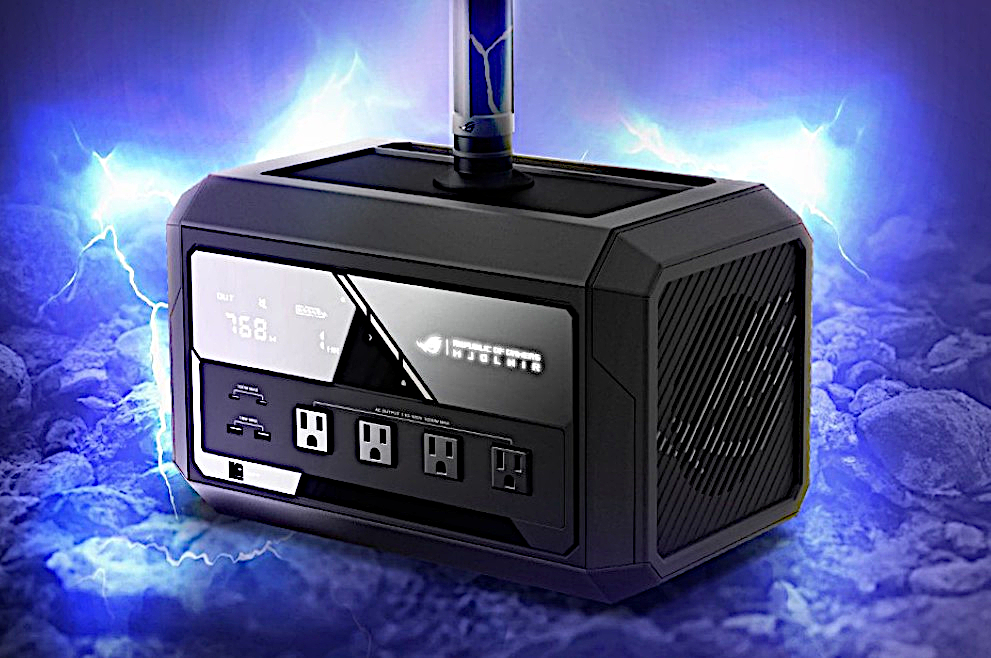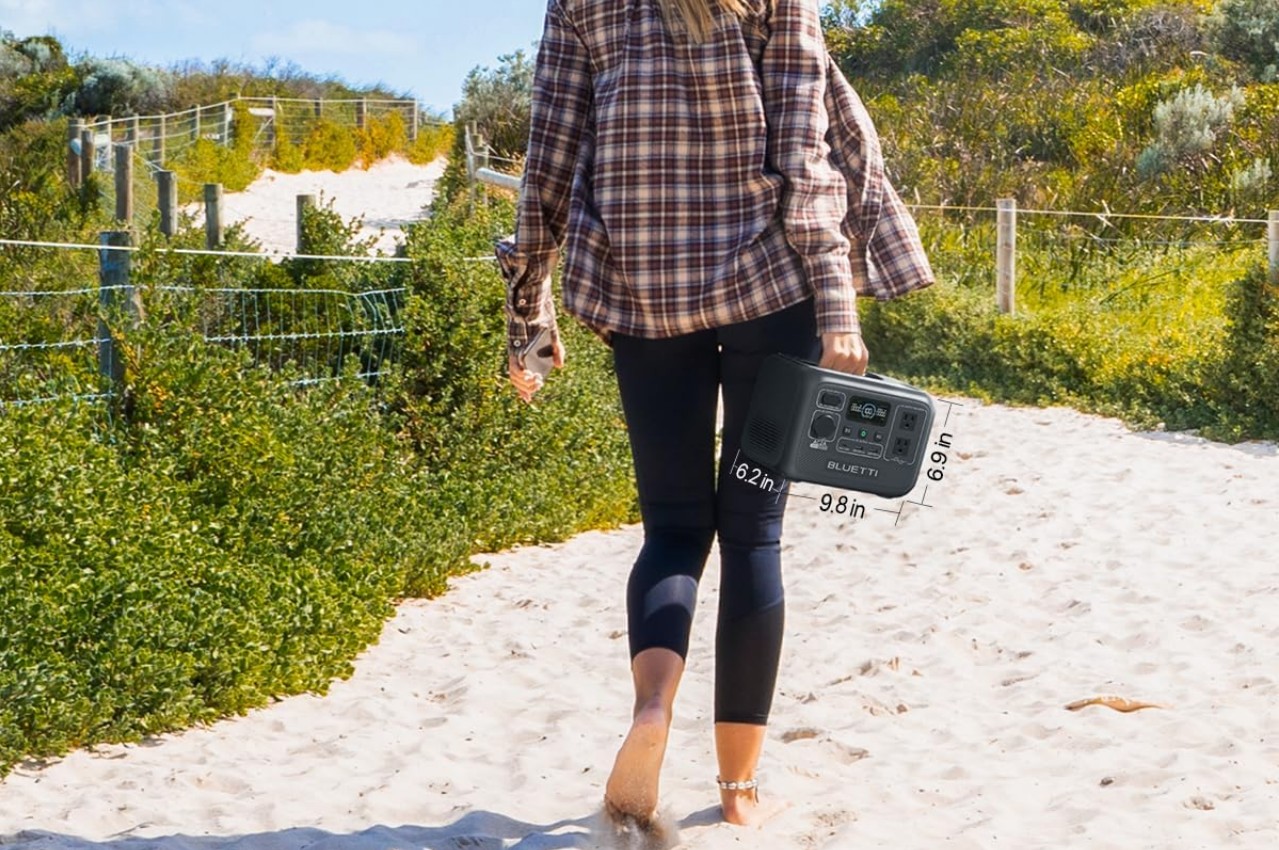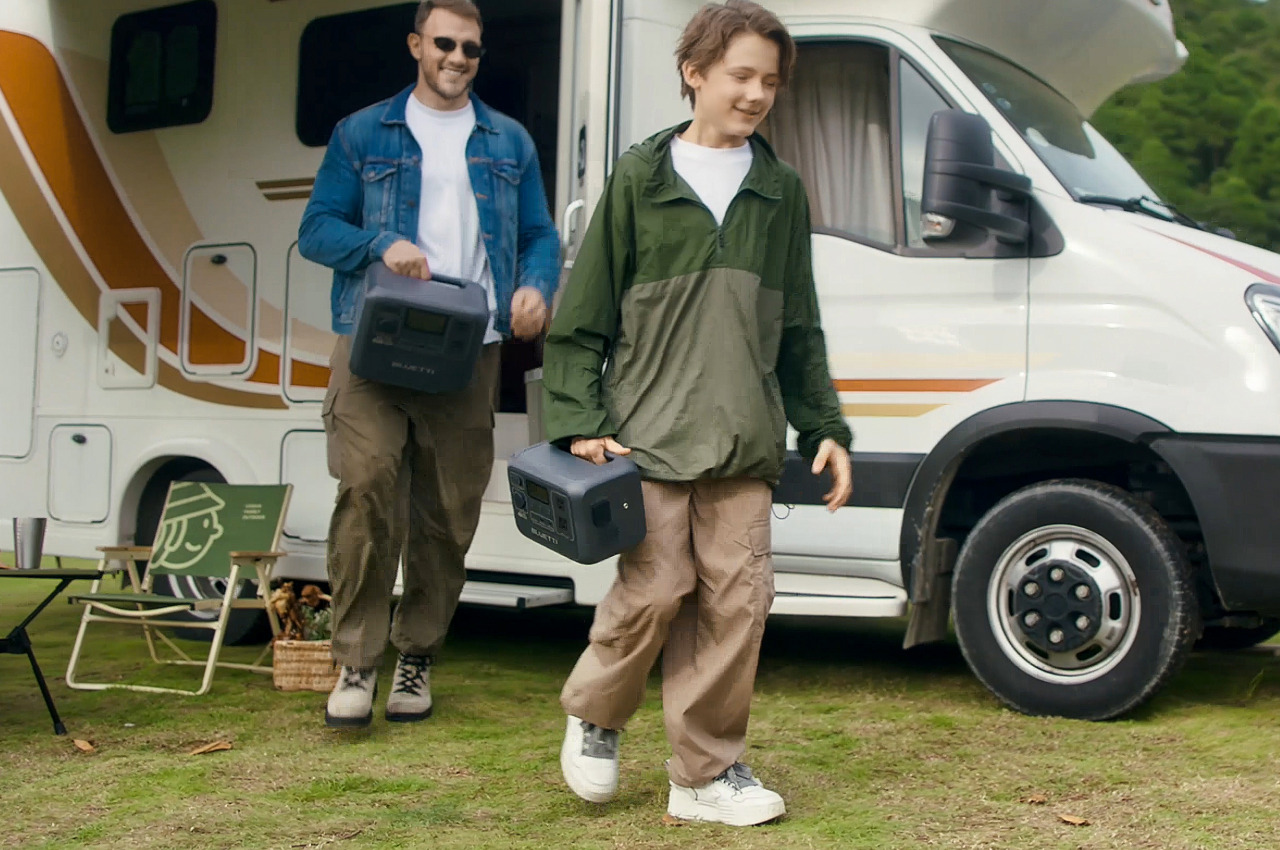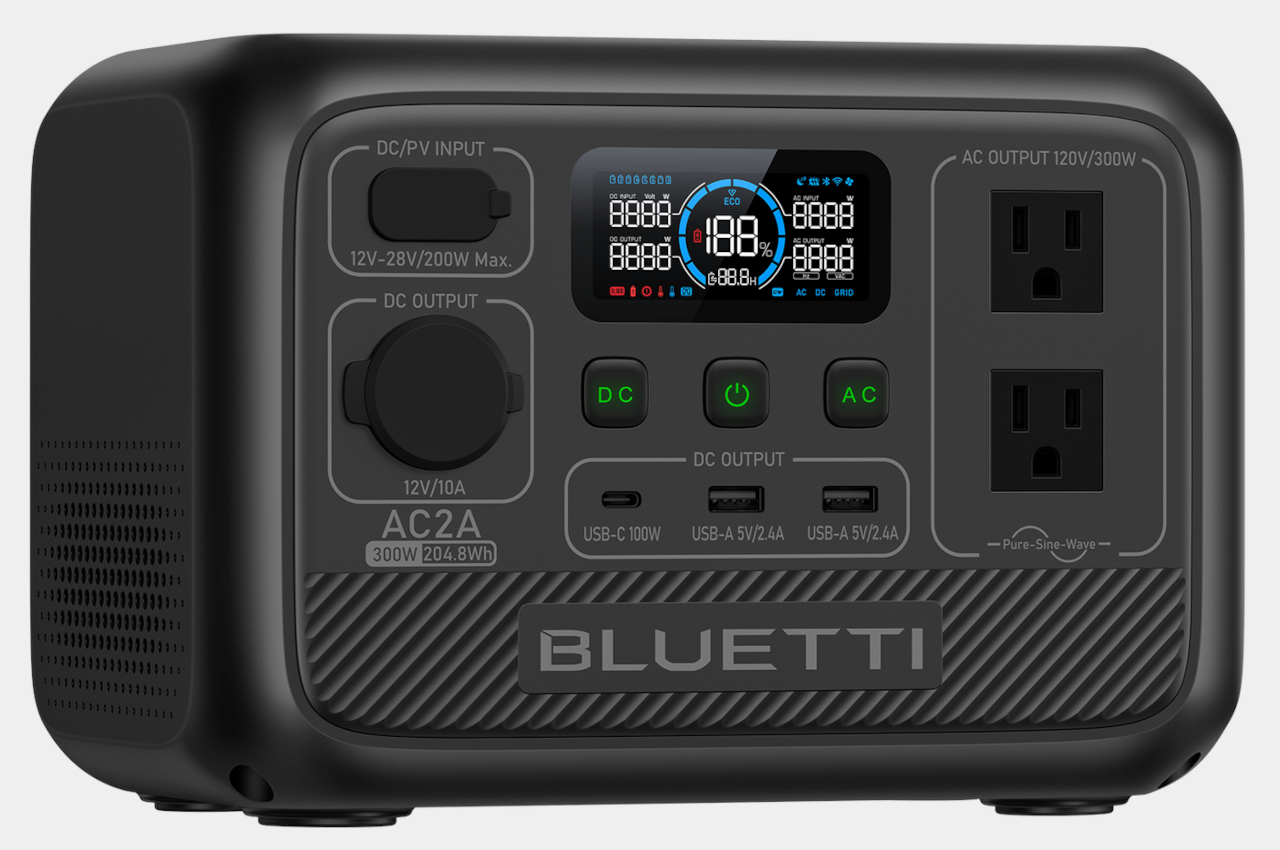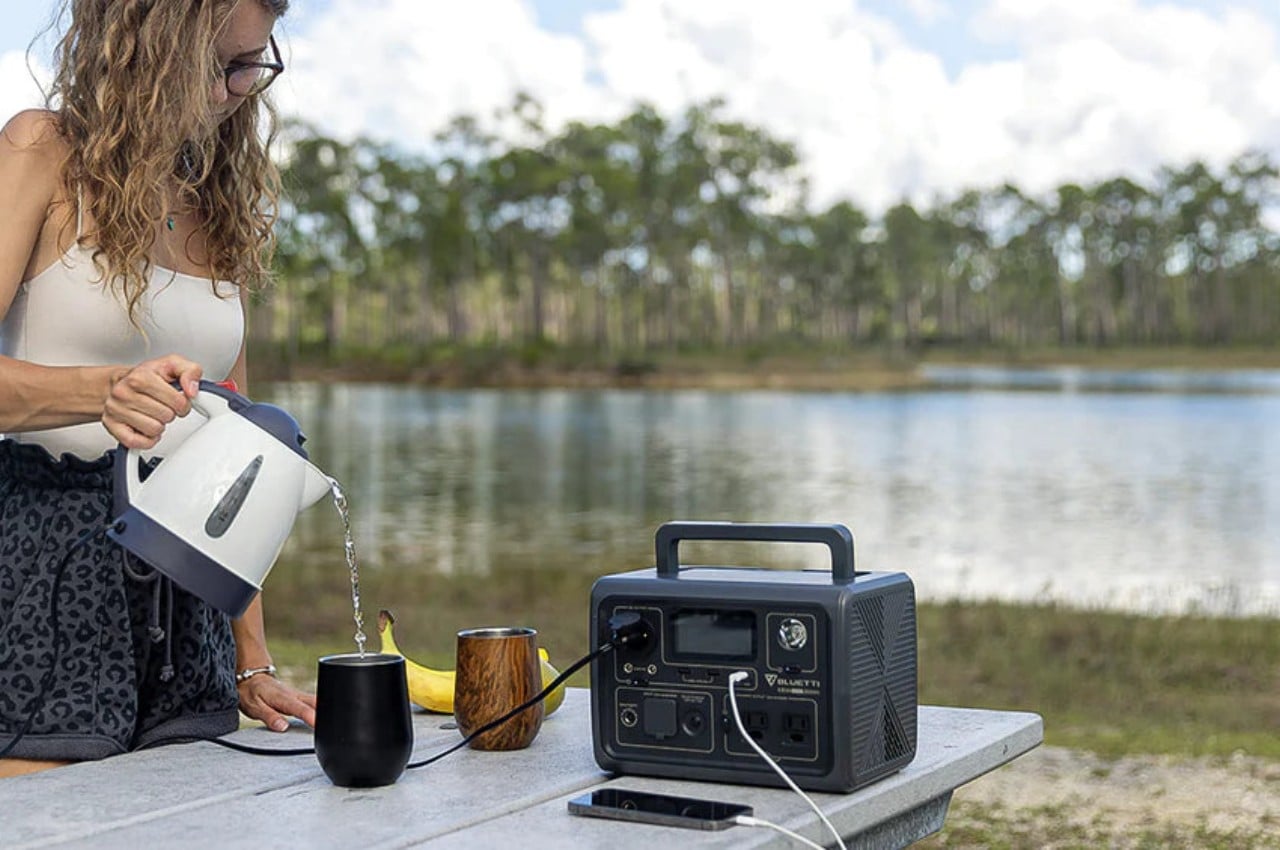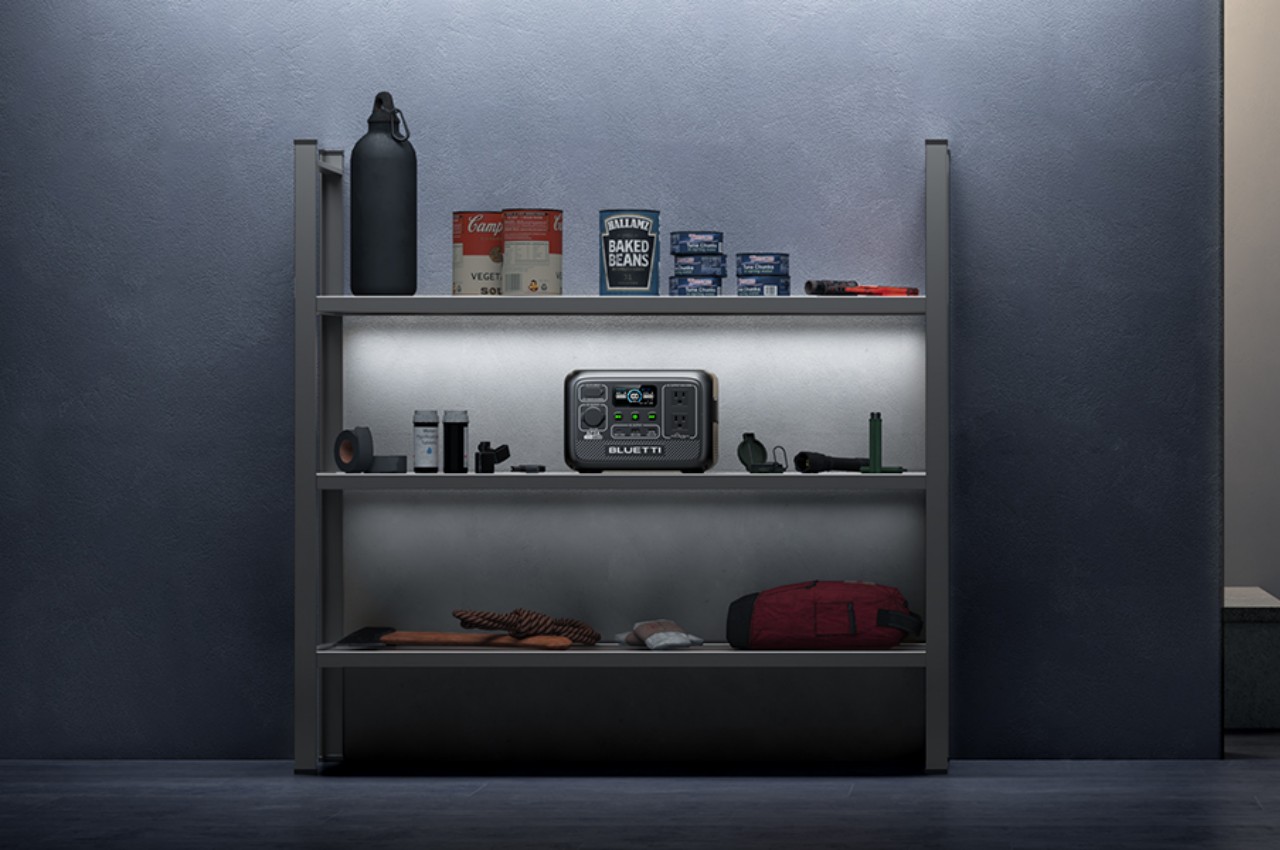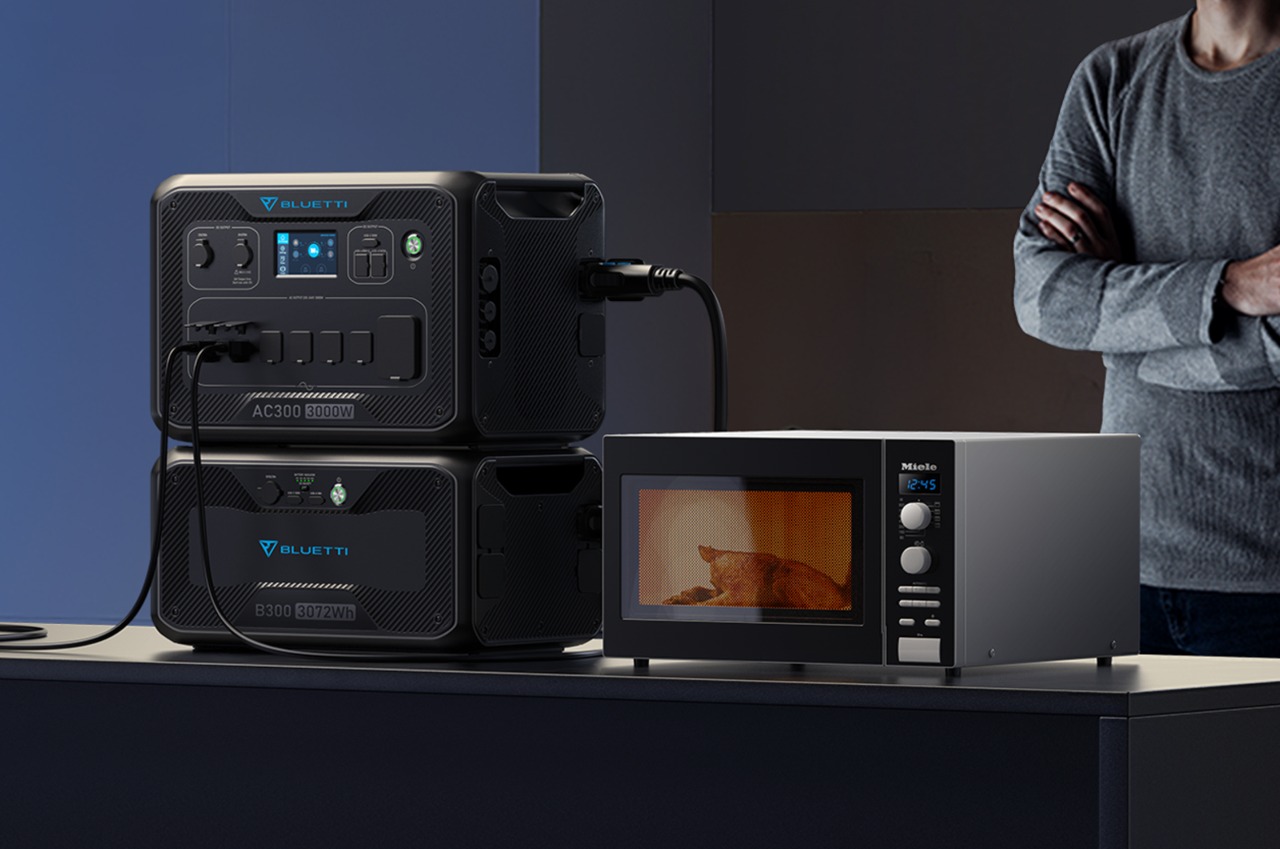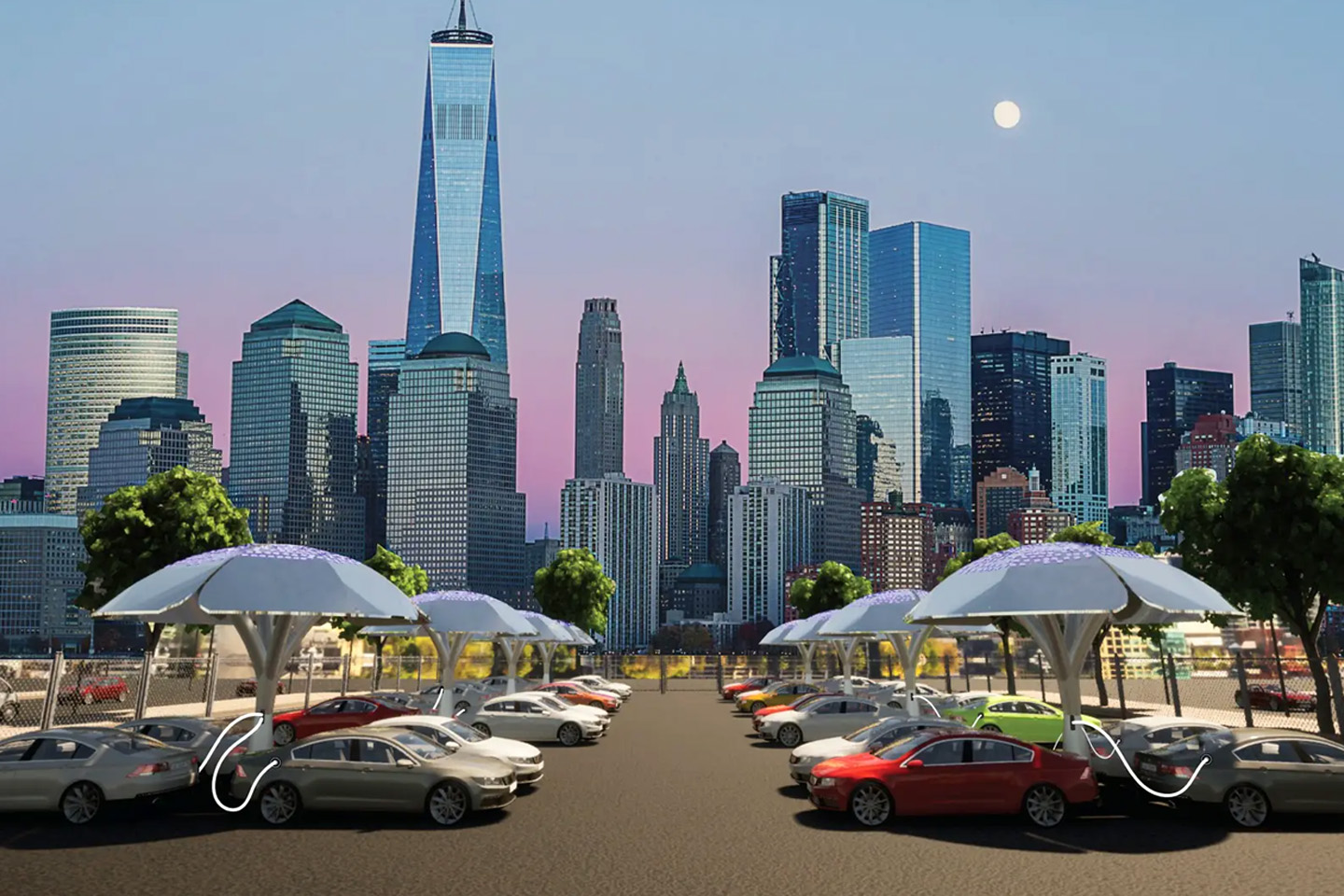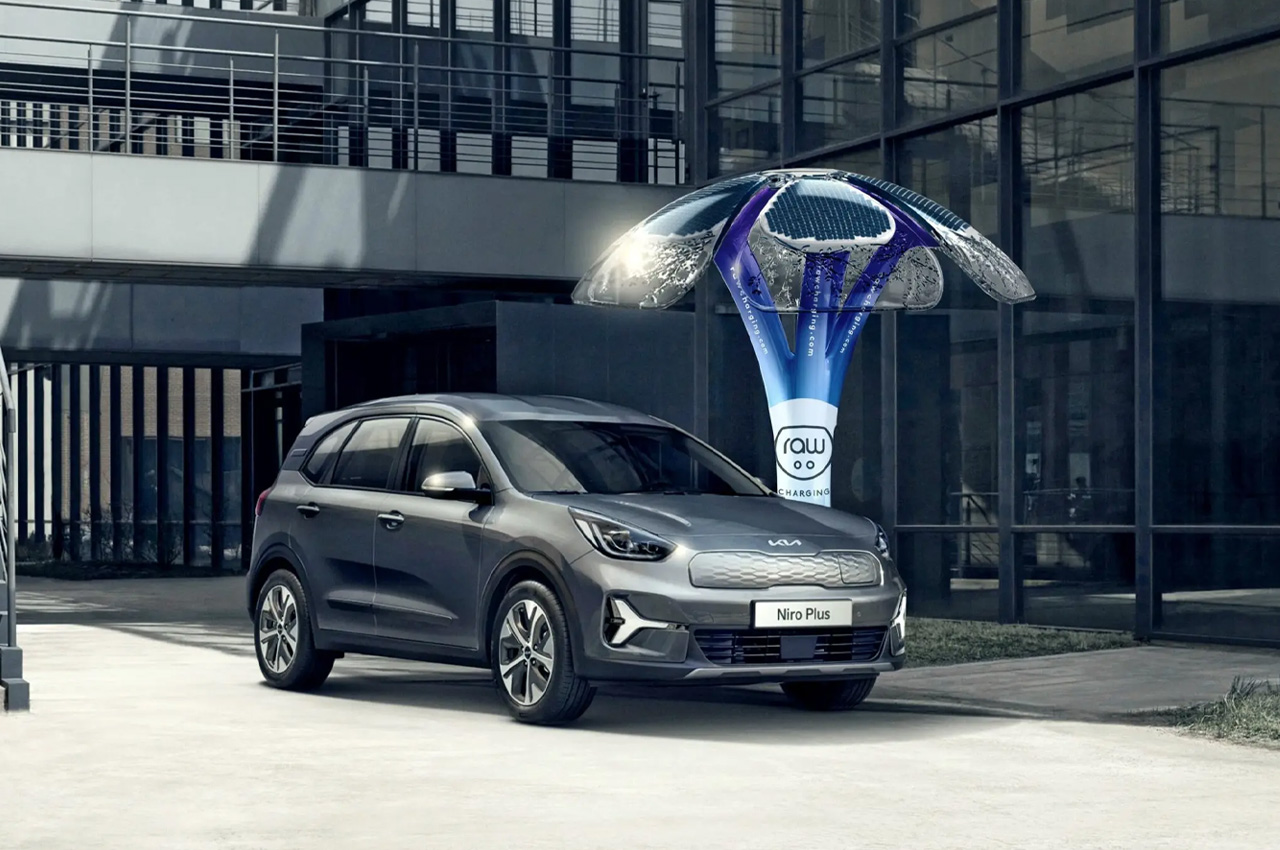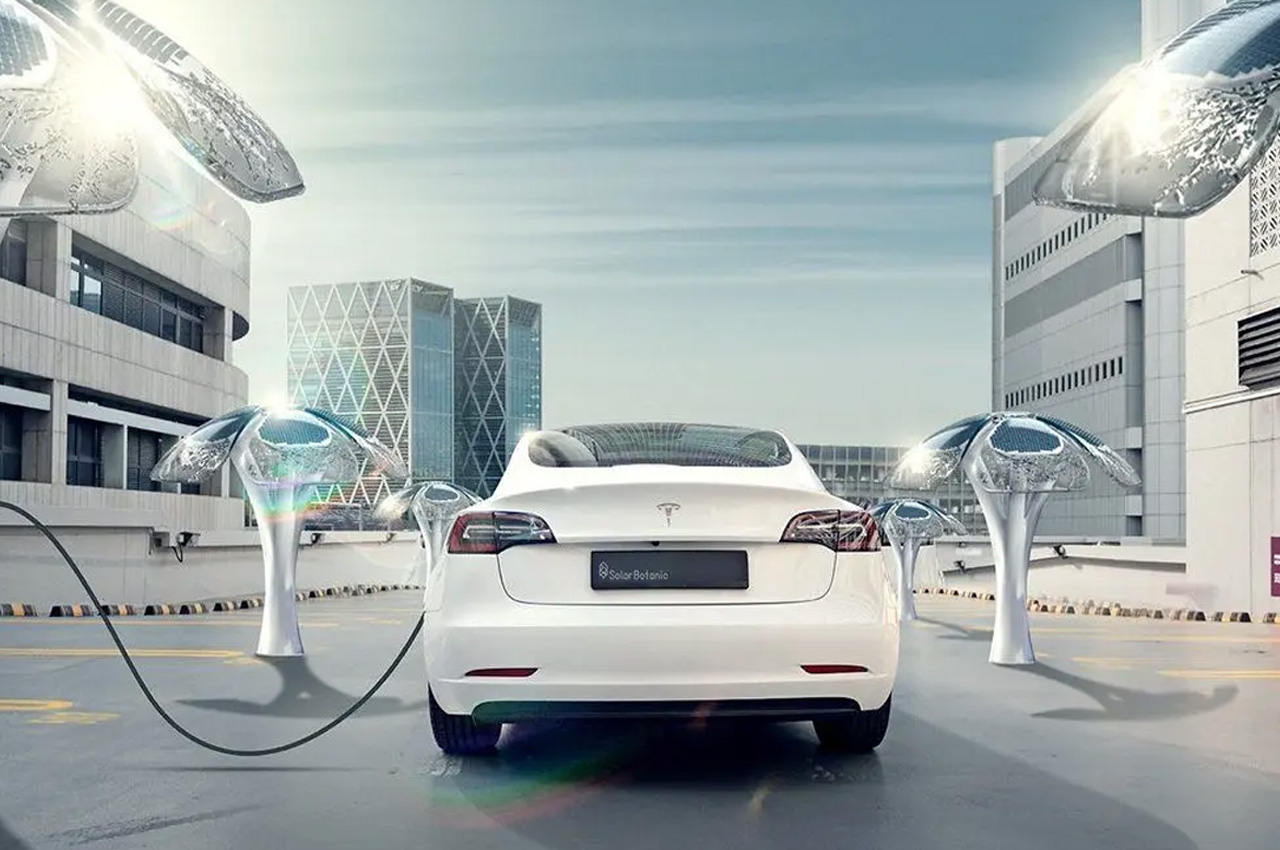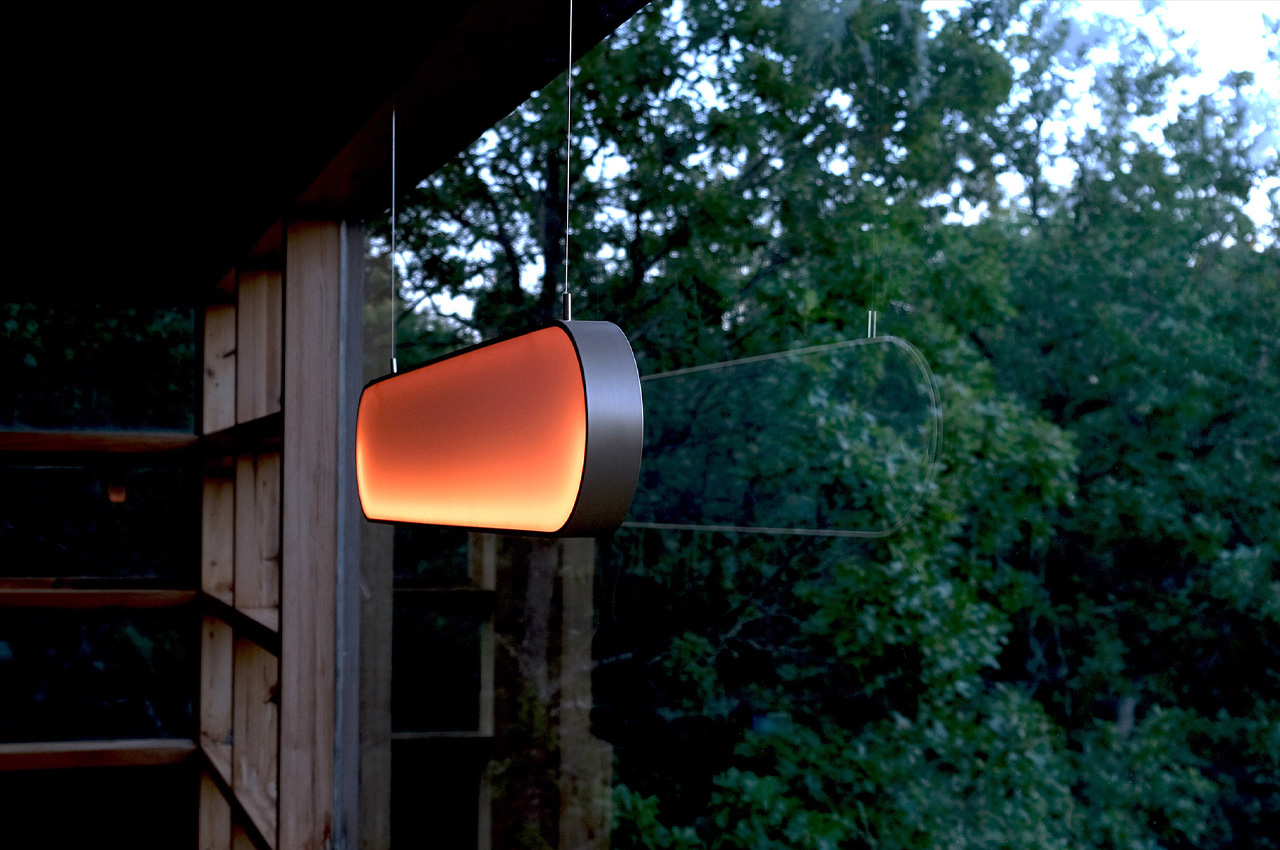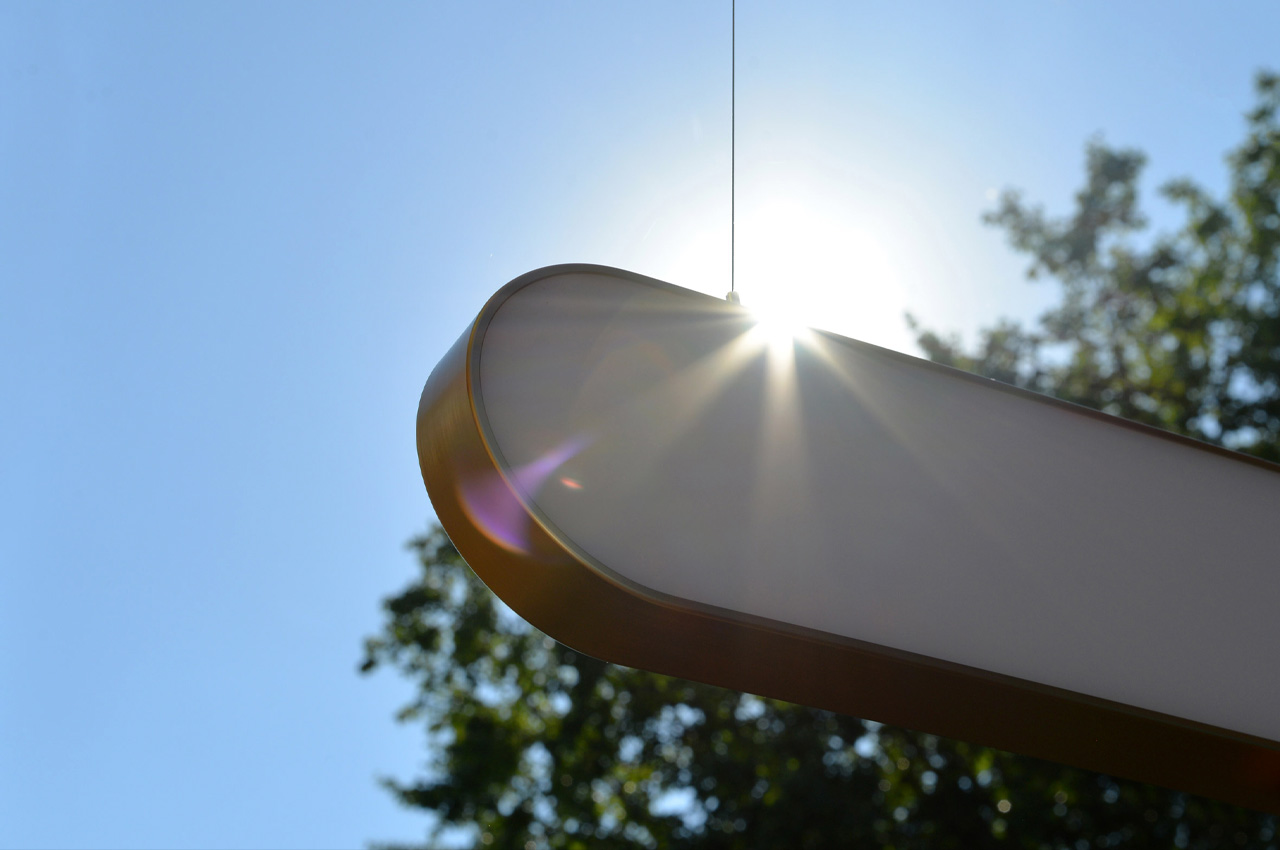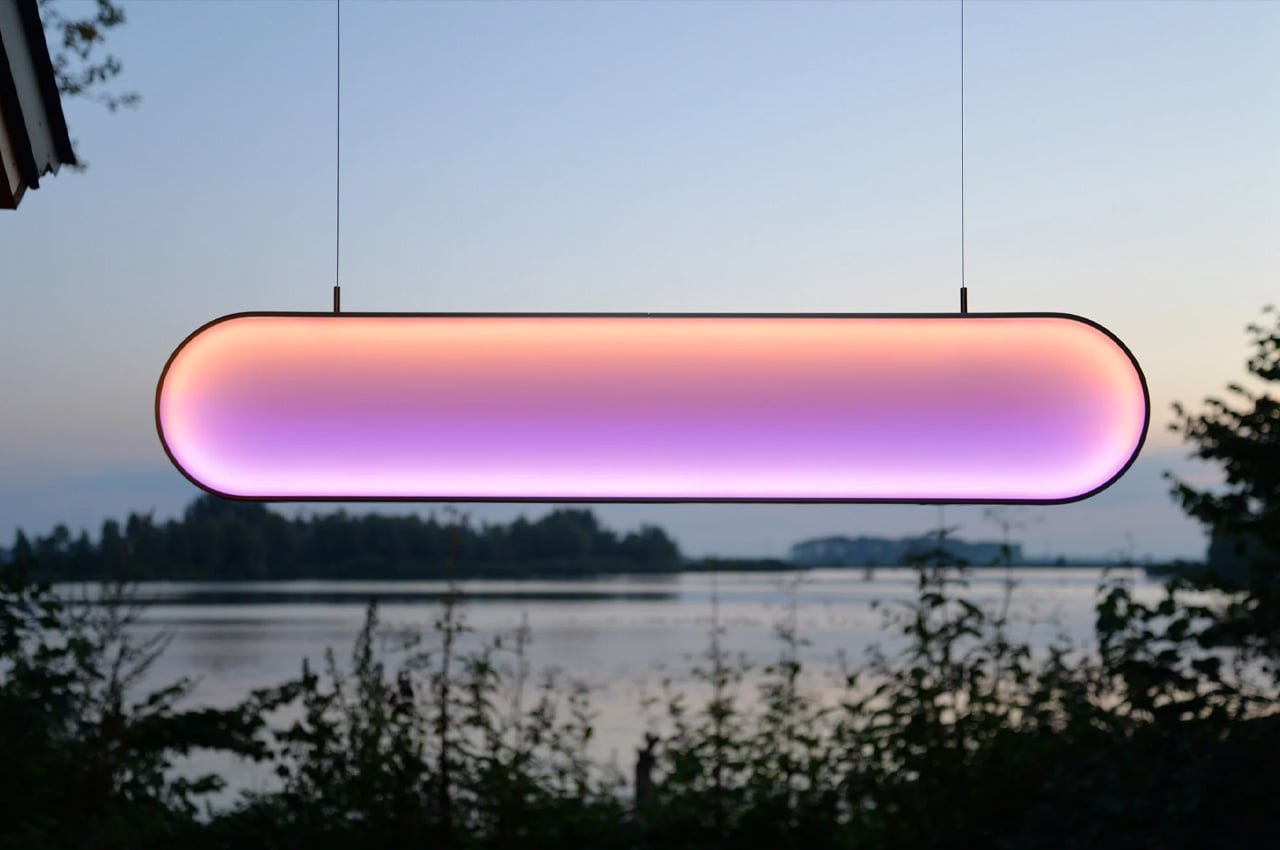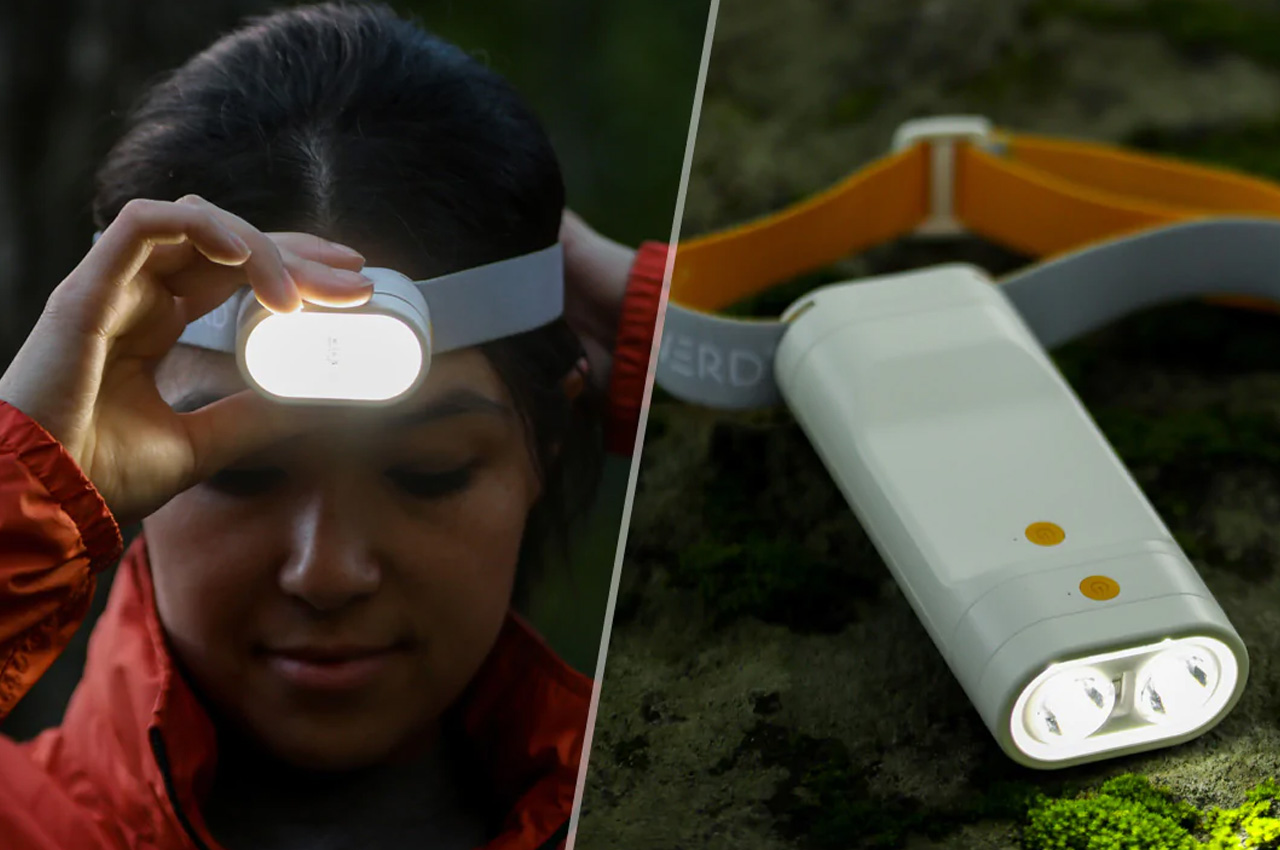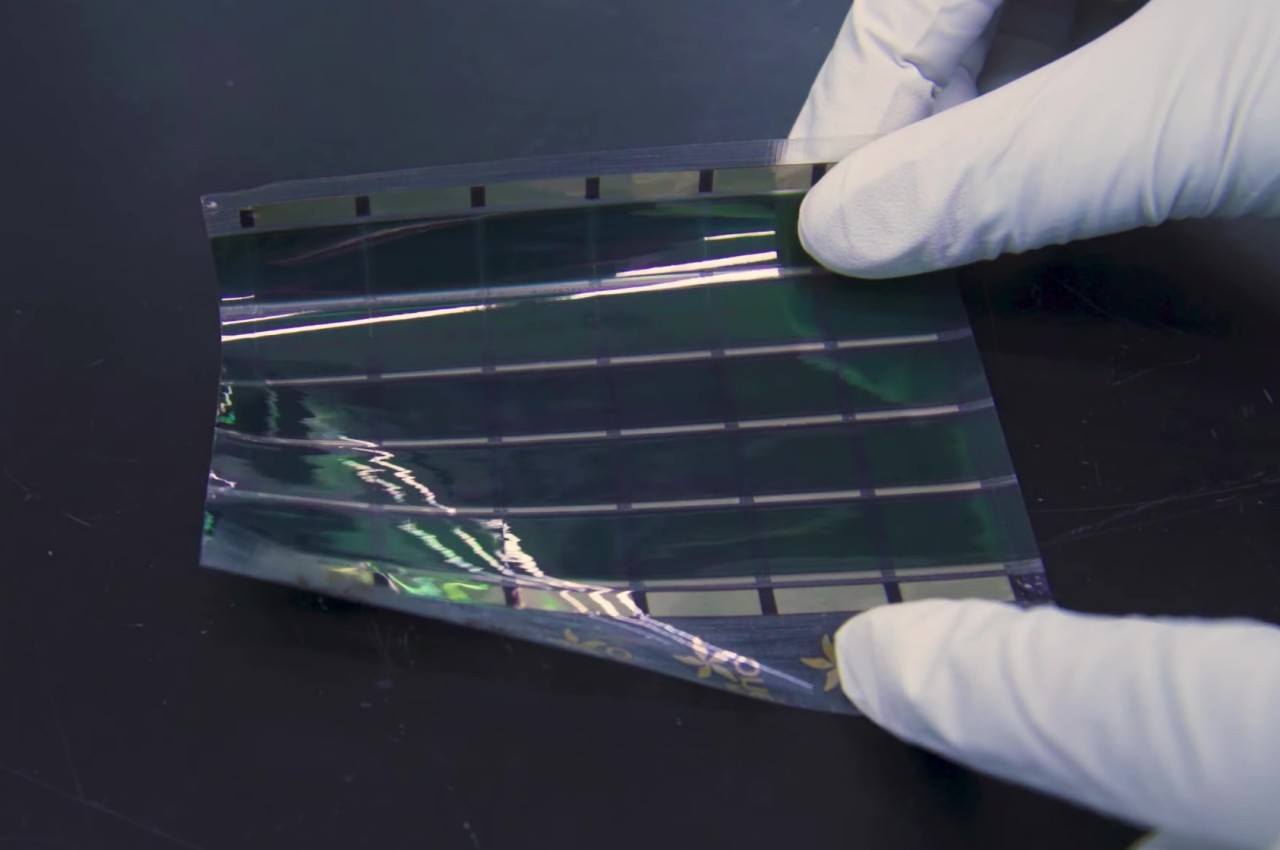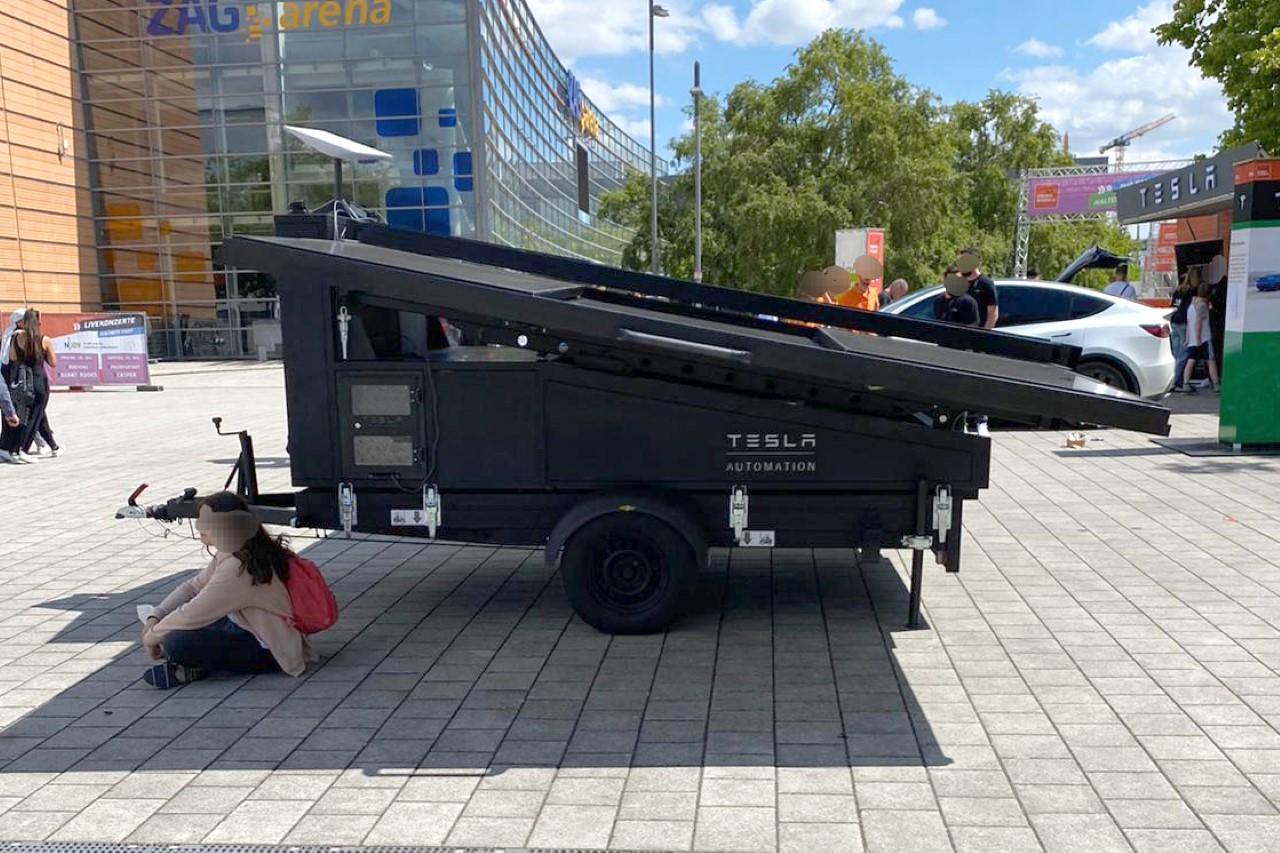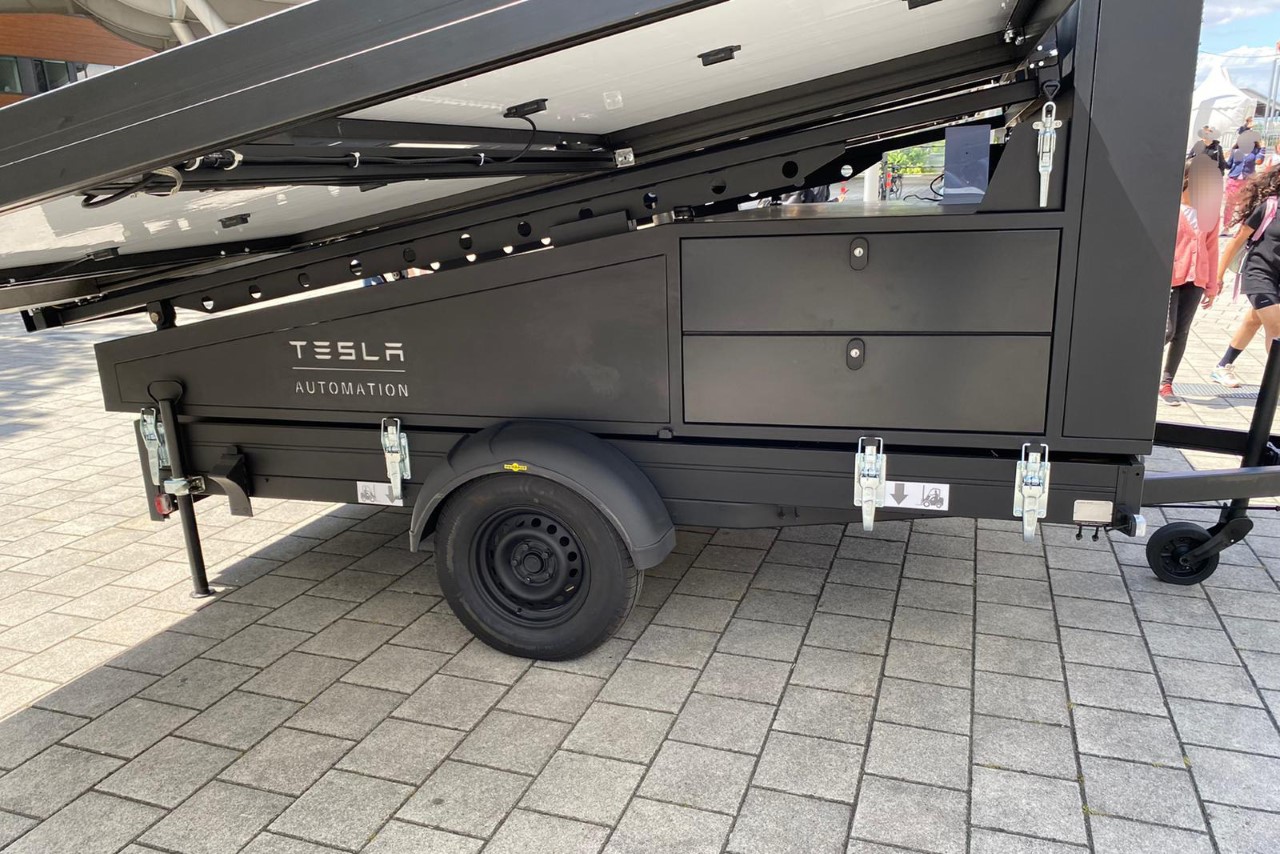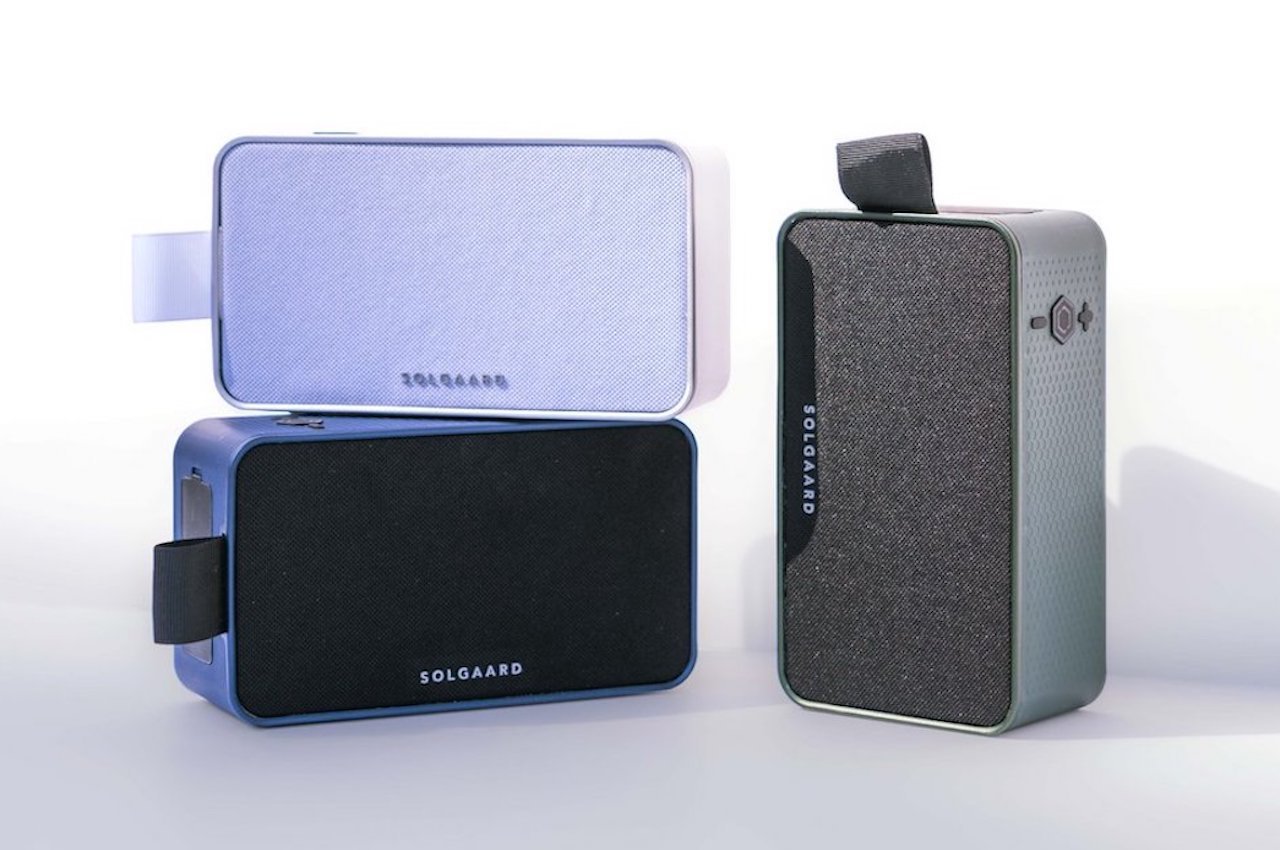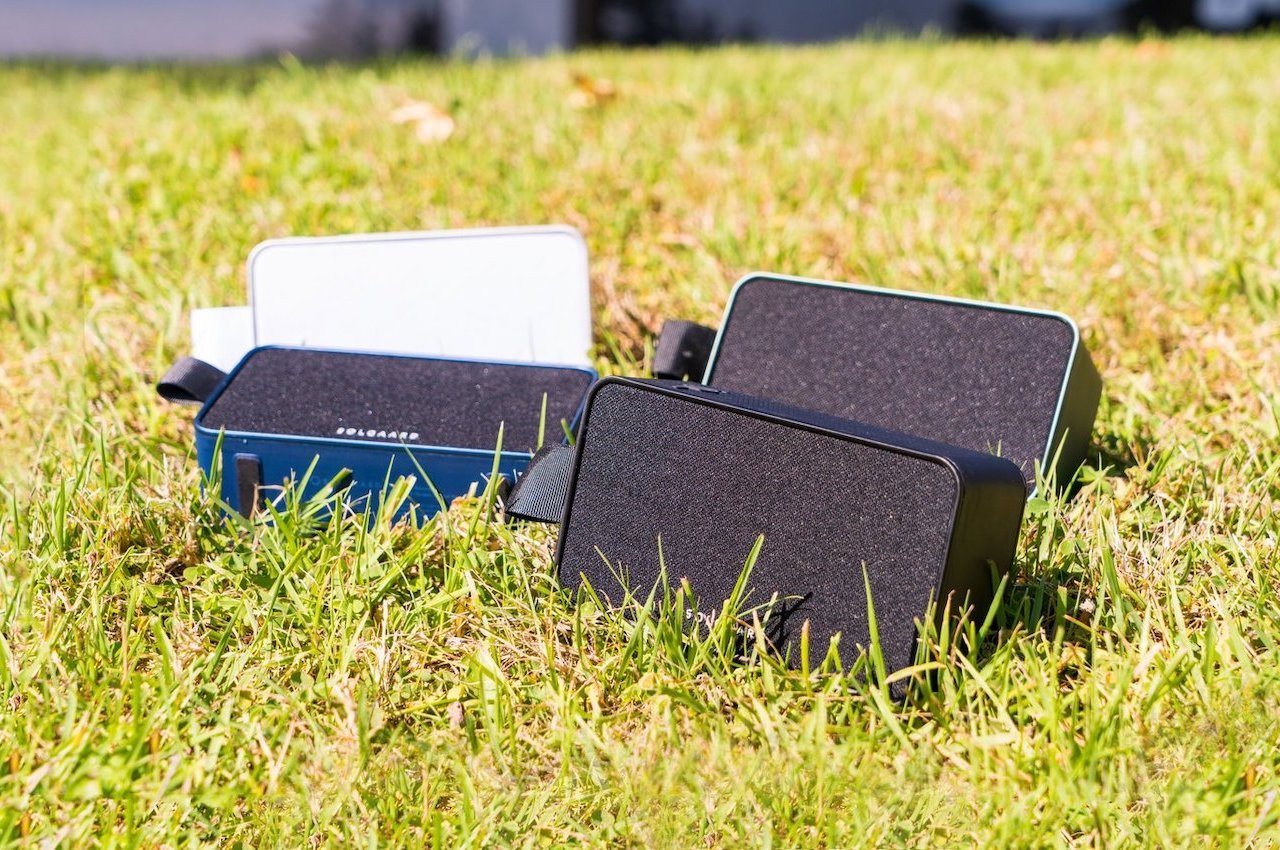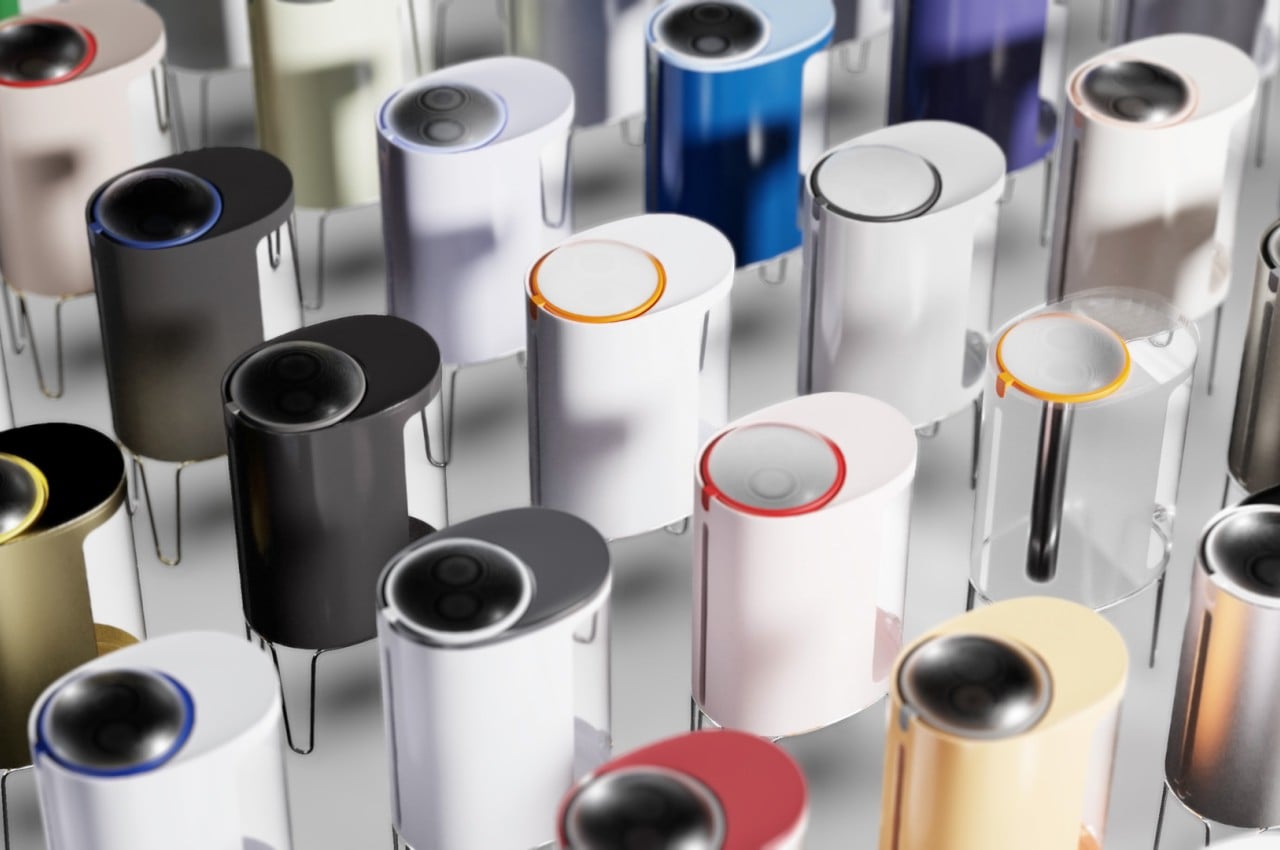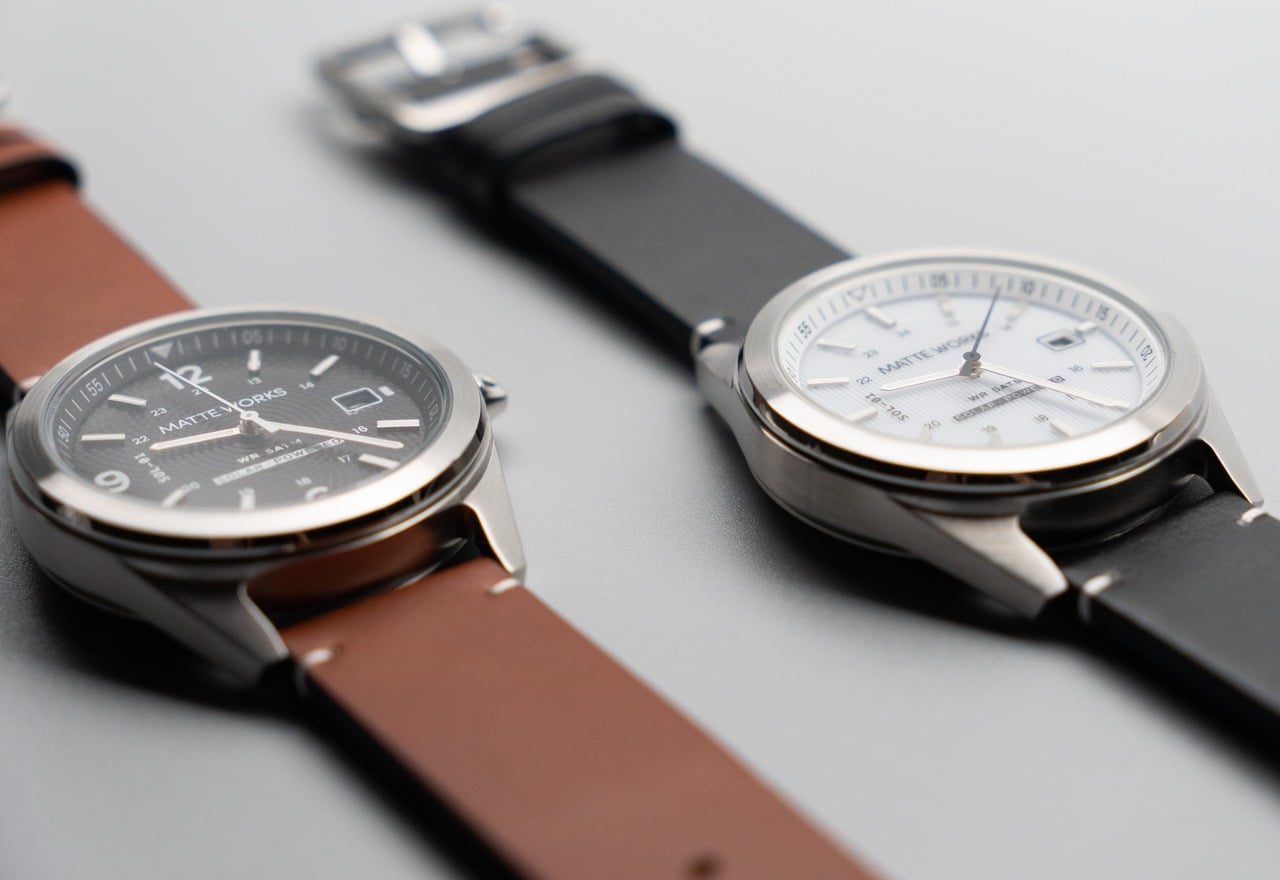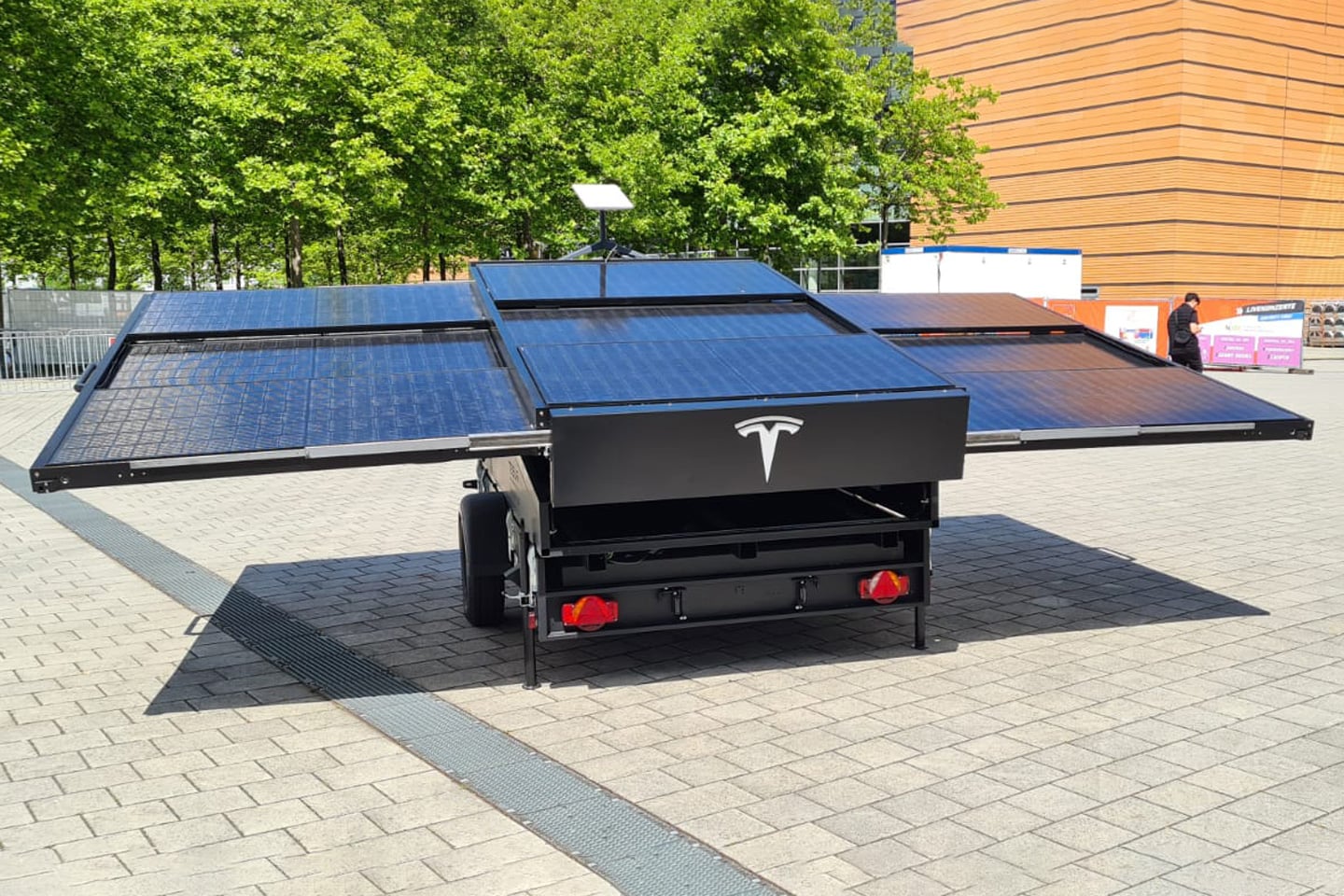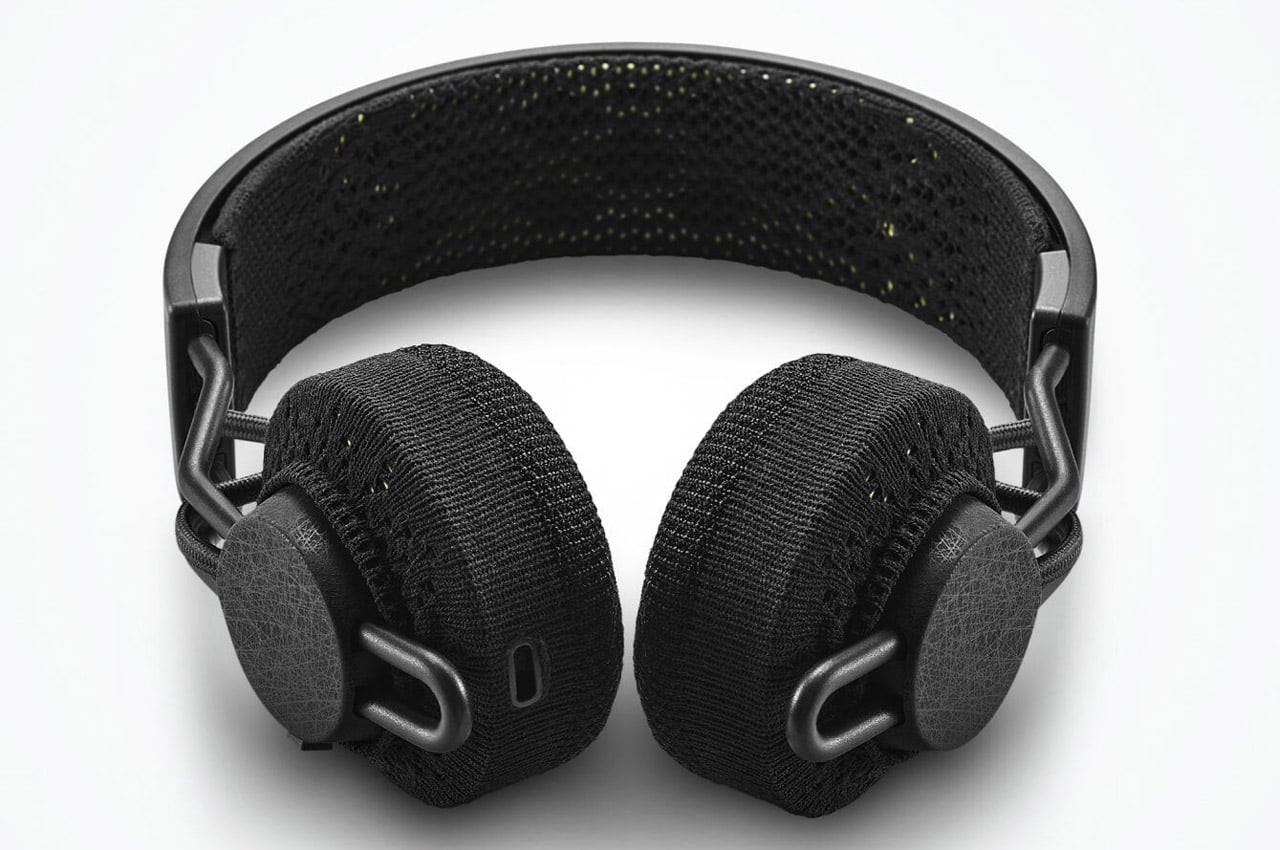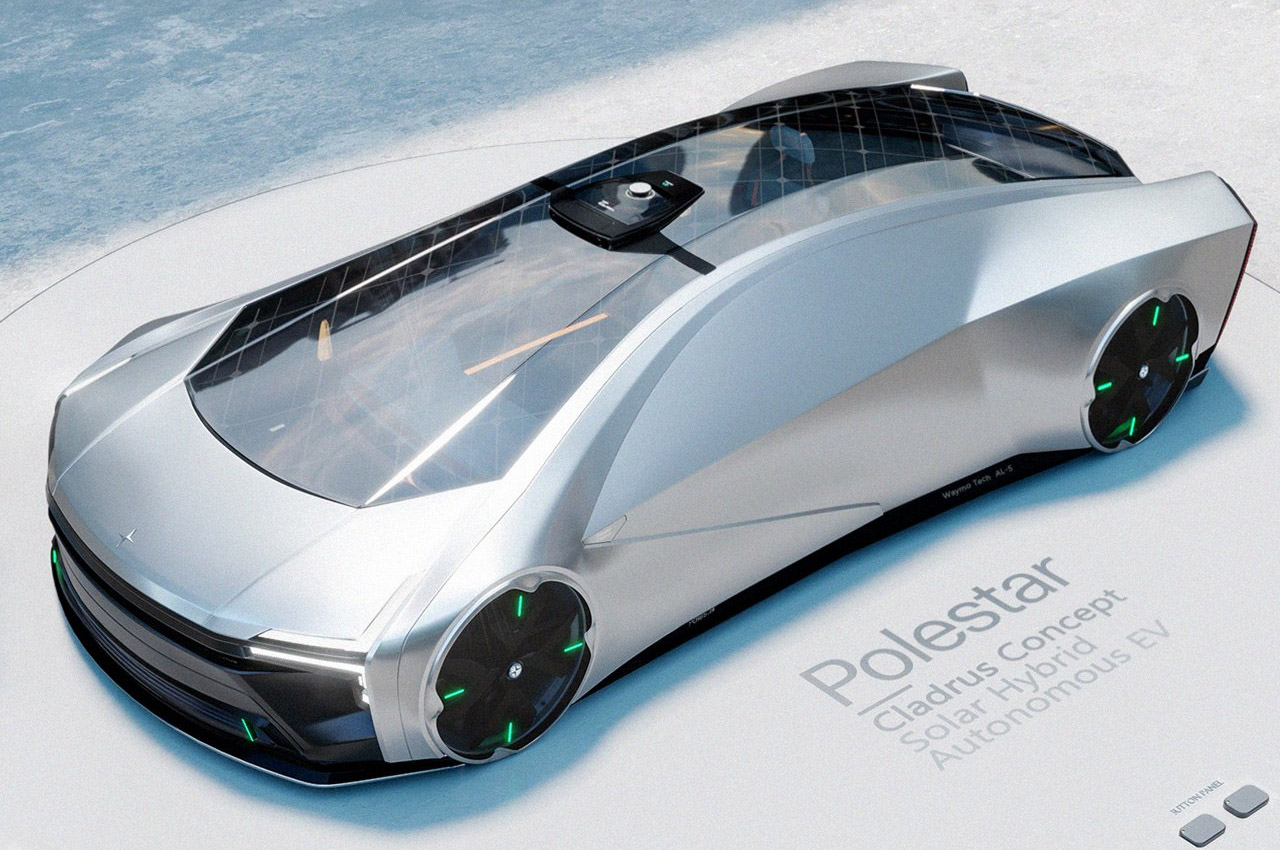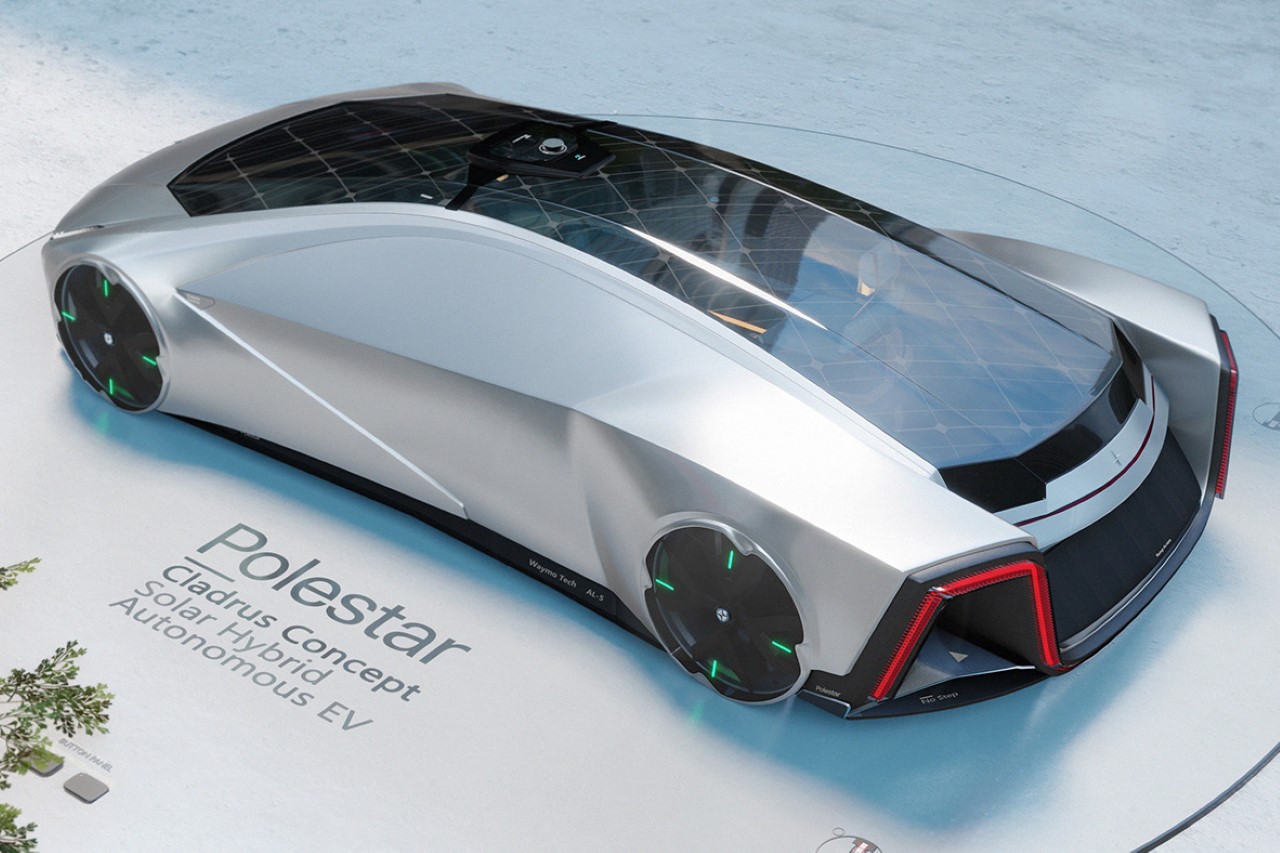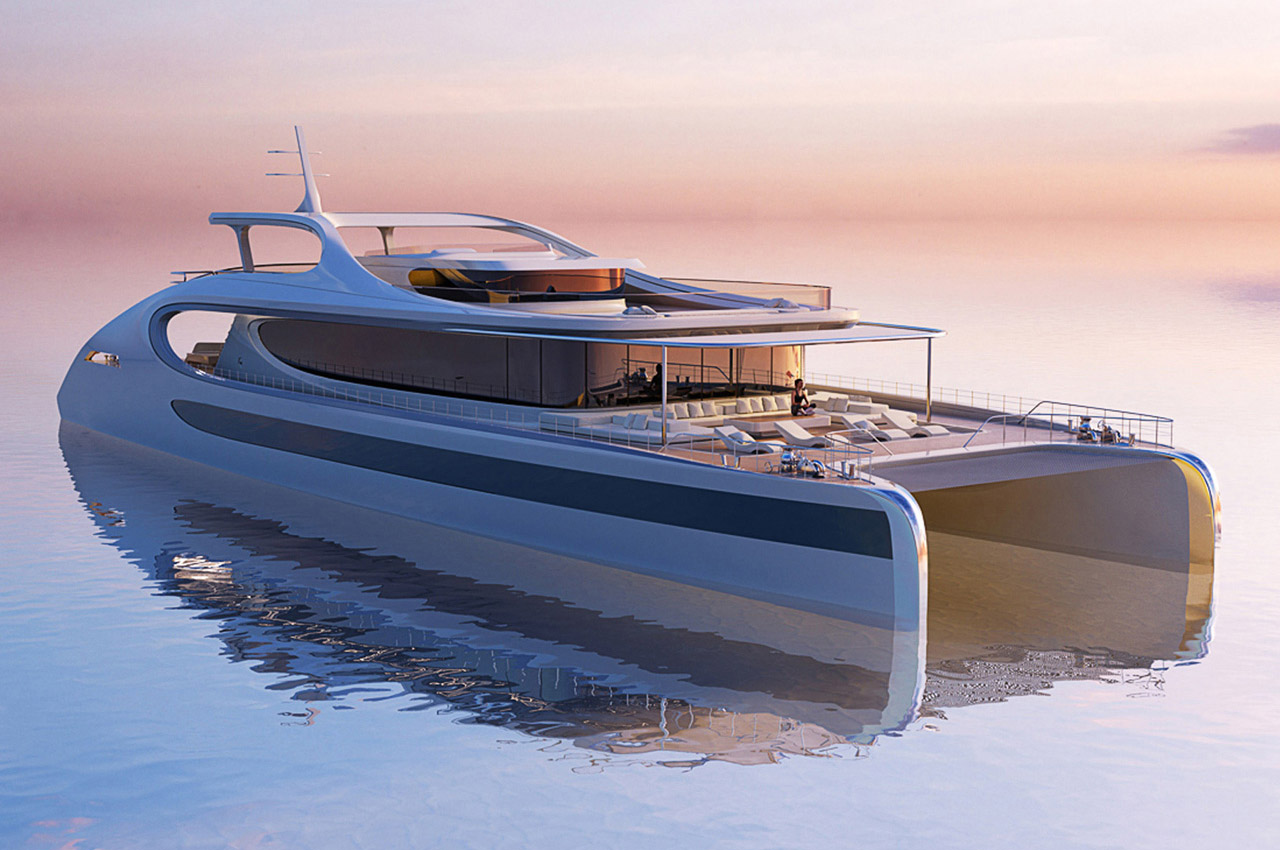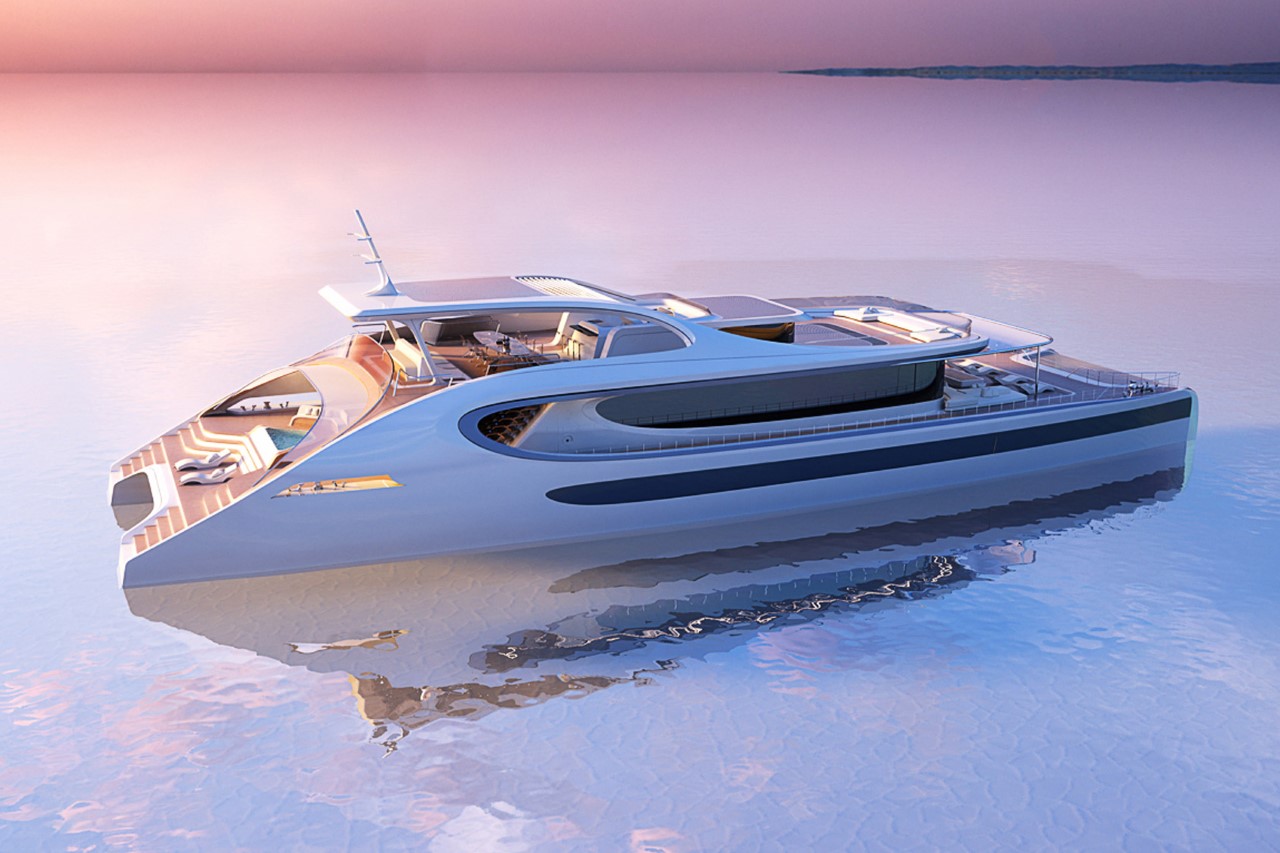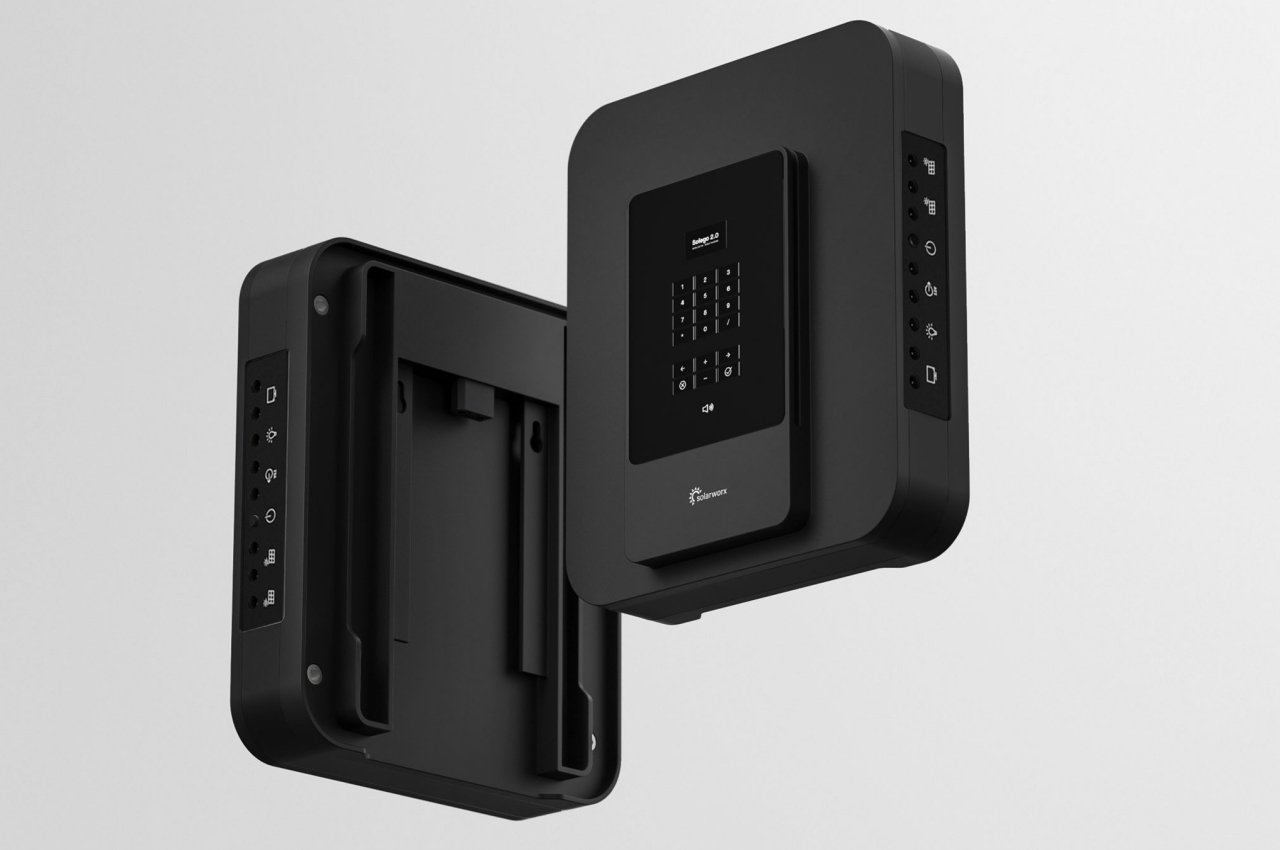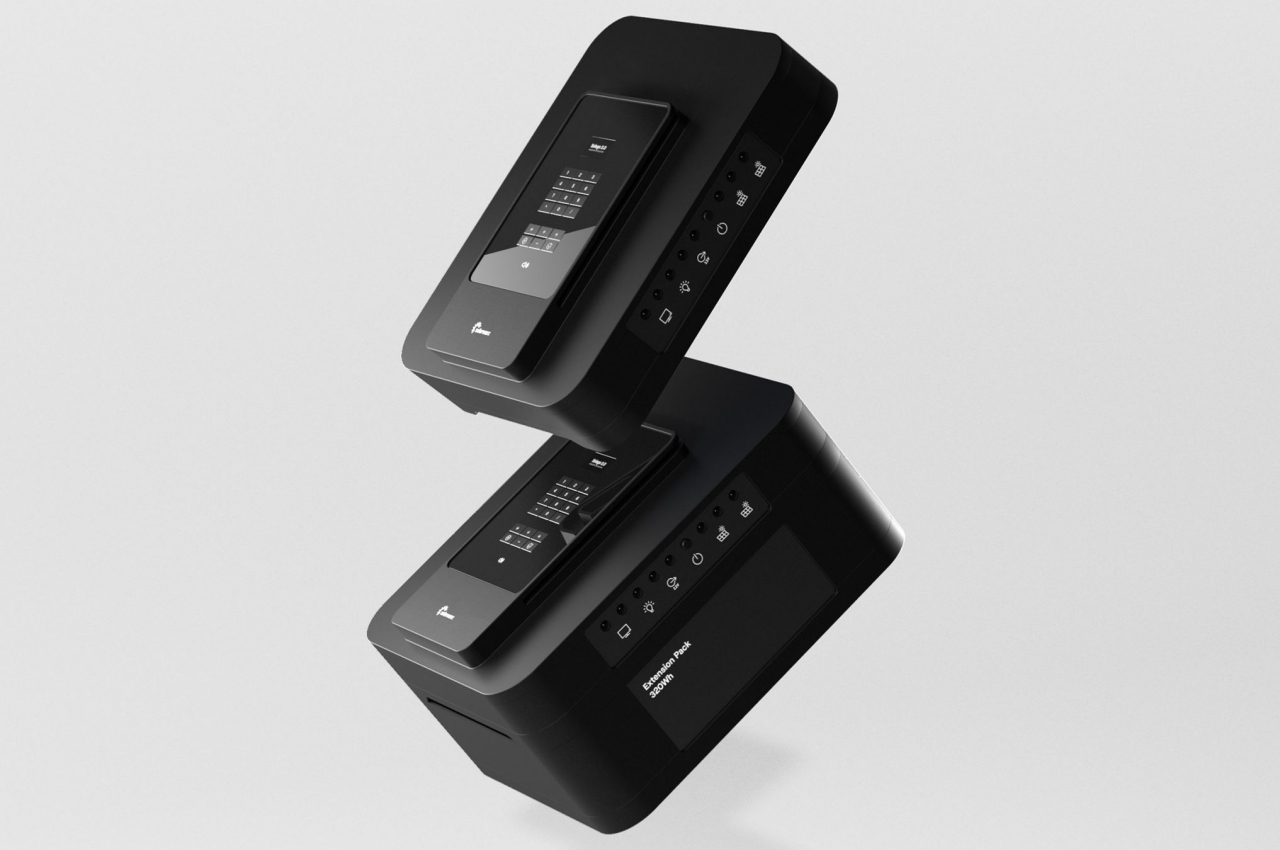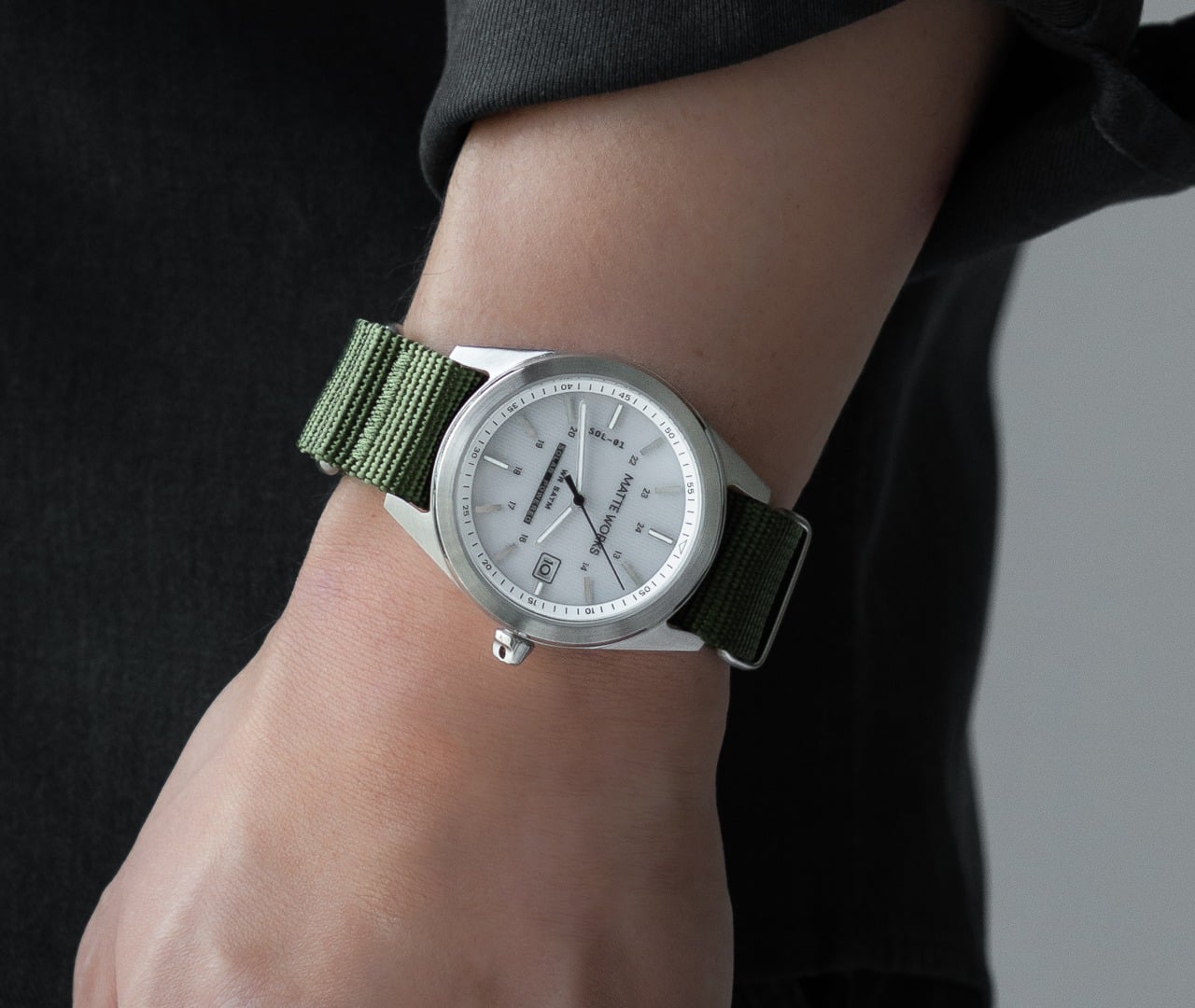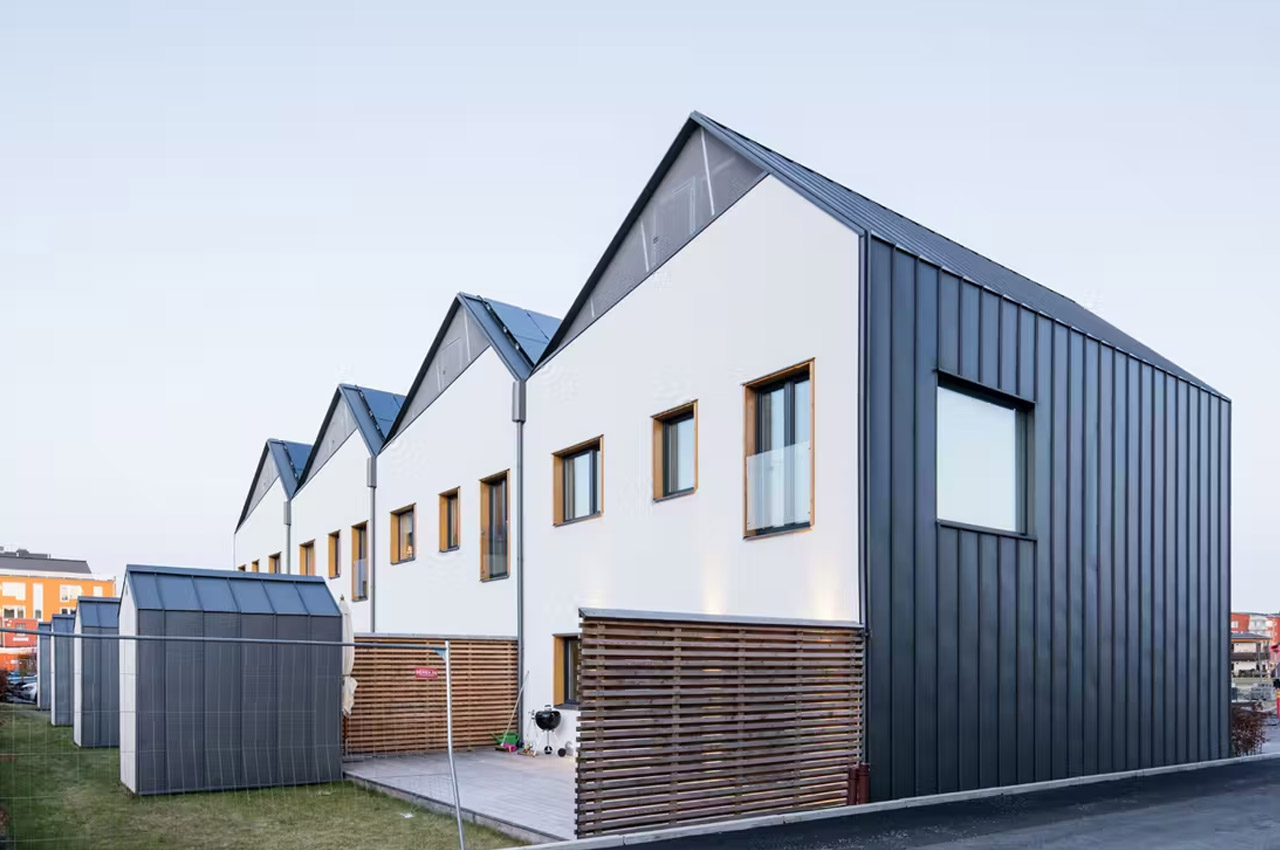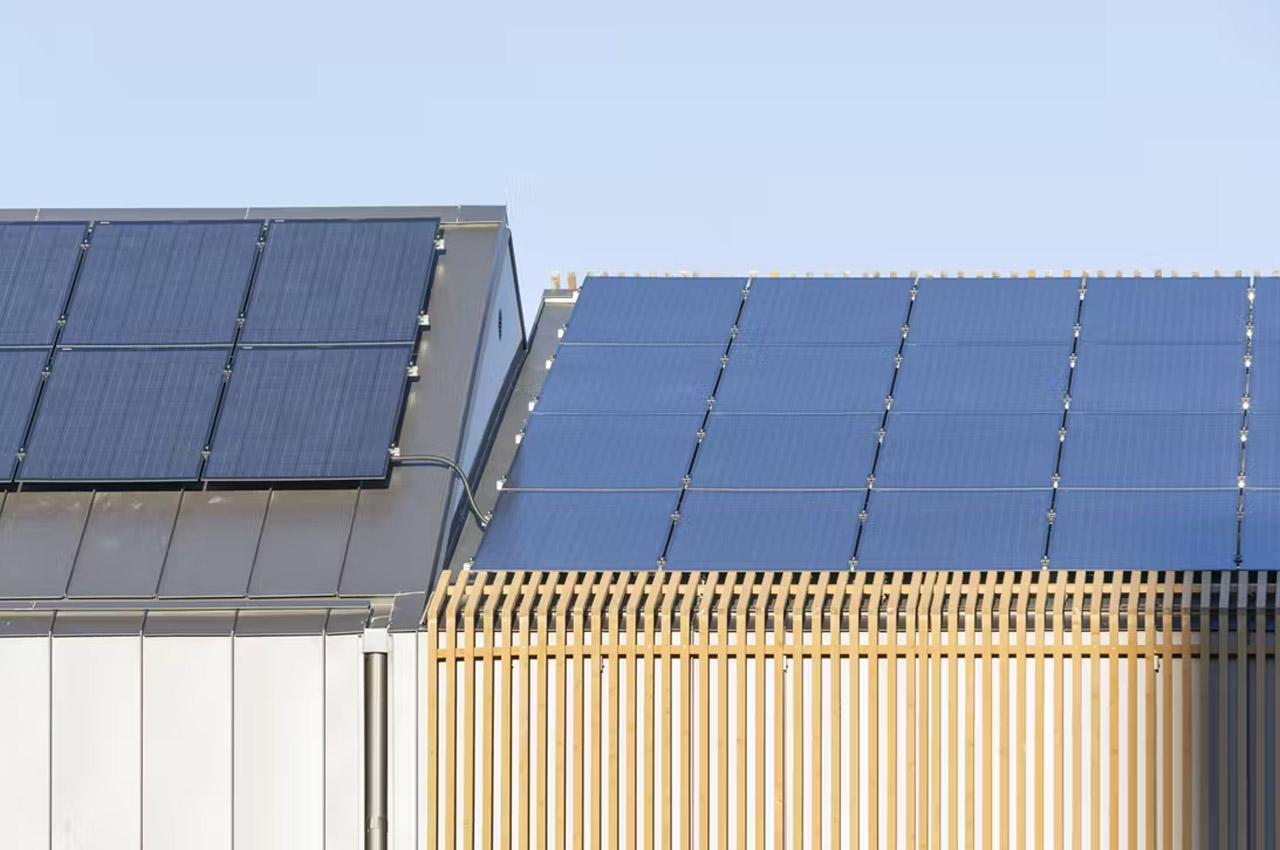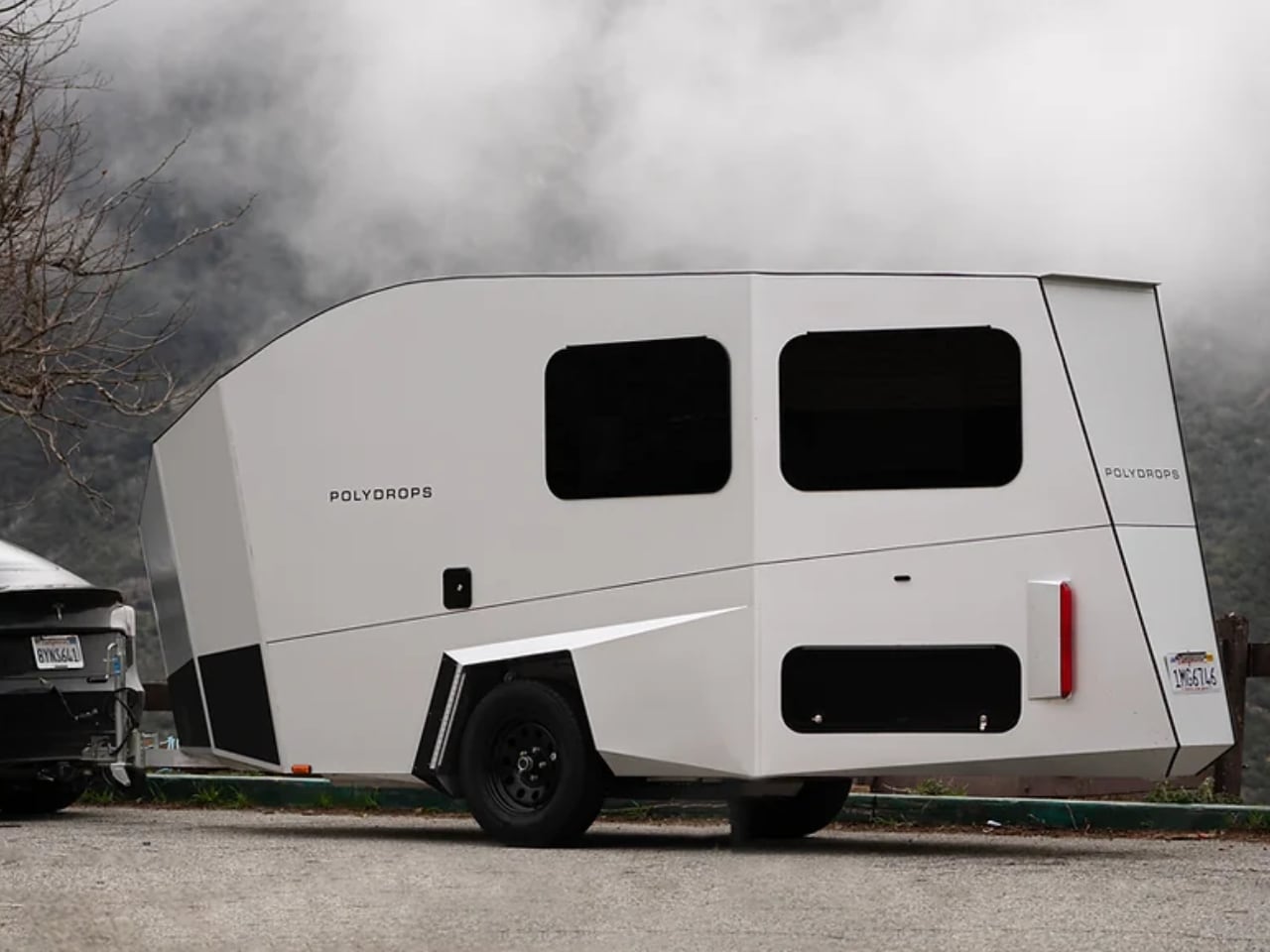
Polydrops has been capturing the attention of the camper industry for a few years with its innovative designs. Their latest release, the P21, promises to redefine the RV experience with its advanced design and features. Known for affordability and lightweight construction, Polydrops campers have become a favorite among modern travelers. The P21 is no exception, pushing the boundaries of what a camper can offer with its futuristic aesthetic and practical functionality.
Designers: Kyunghyun Lew and Jieun Choi
The company, founded by two architects, always integrates architectural principles into its designs. This new model is distinguished by its striking appearance and exceptional aerodynamic performance. The P21 is designed to turn heads on the road and at campsites, seamlessly blending style with functionality in a manner unmatched by other campers.
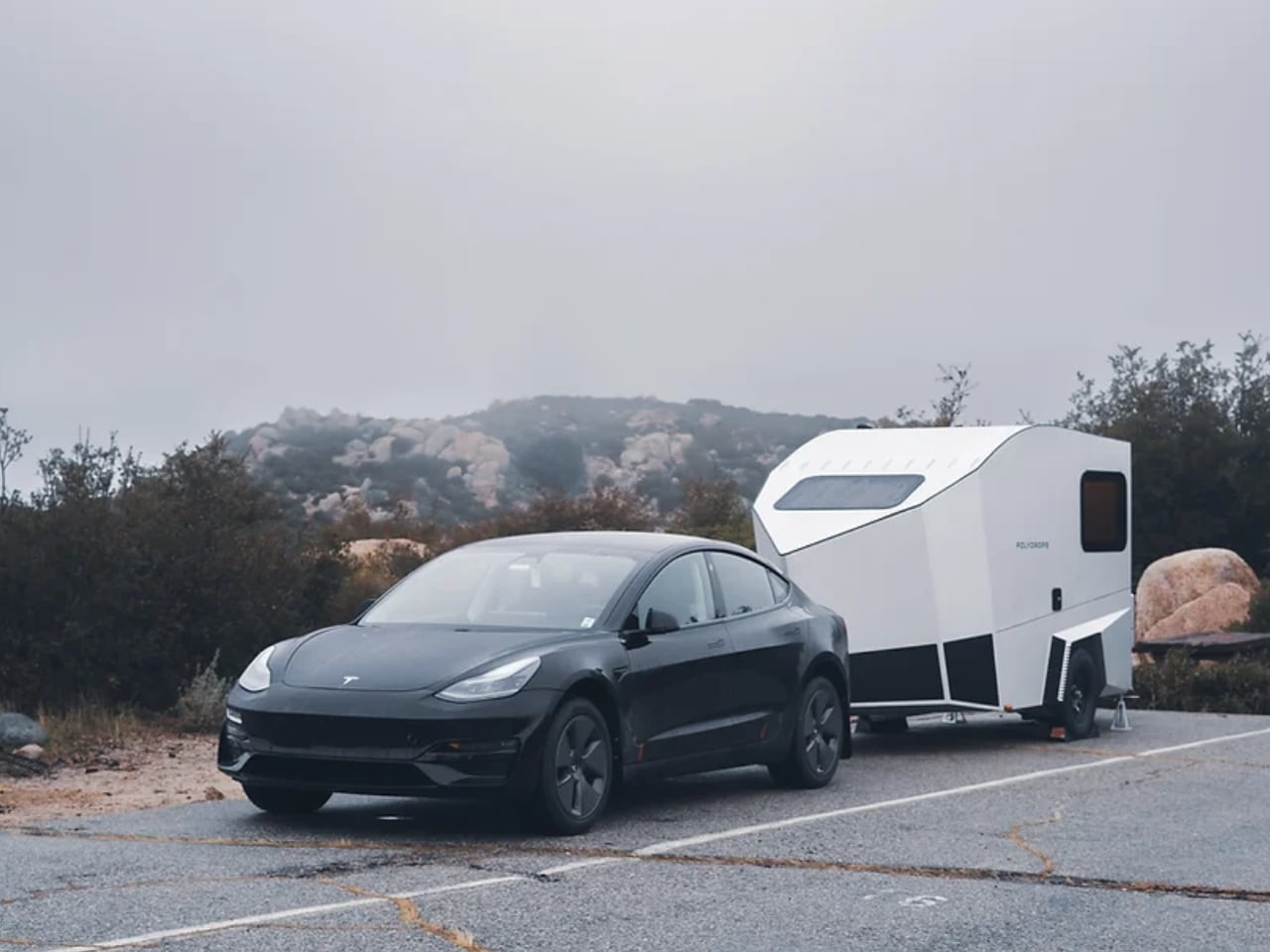
The design prioritizes efficiency and performance, with every exterior aspect crafted to enhance aerodynamics, reduce drag, and improve towing stability. This focus on aerodynamic efficiency is significant for those using electric vehicles, as it helps to maximize range and minimize energy consumption.
Exterior Design: Futuristic and Functional
The P21’s exterior is striking with its angular, polygonal design, reminiscent of Tesla’s Cybertruck. Polydrops has seamlessly integrated architectural principles into the P21, creating a visually appealing and highly functional structure.
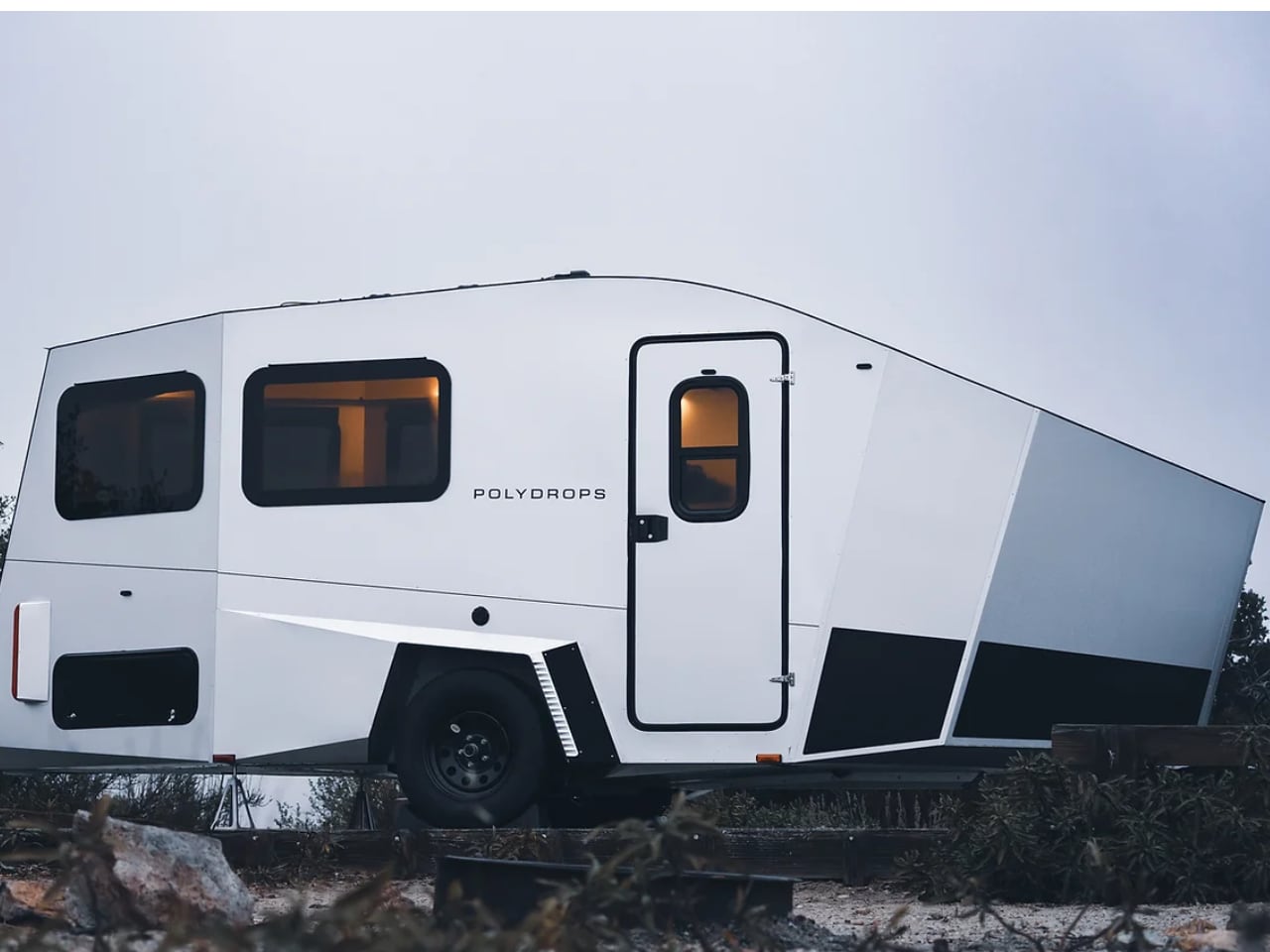
Each line, panel, and curve of the P21 enhances its aerodynamic performance. The sharp, knife-edge front cuts through the air with minimal resistance, ensuring stability and ease of towing, even at high speeds. This aerodynamic design reduces drag, crucial for maintaining the range and efficiency of electric vehicles towing the trailer.
Aerodynamics: The Science Behind the Design
Polydrops has meticulously engineered the P21’s exterior to optimize its aerodynamic efficiency. Computational Fluid Dynamics (CFD) simulations played a crucial role in shaping the P21, ensuring that every aspect of its design minimizes air resistance and maximizes efficiency. These simulations, akin to those used by aerospace and automotive leaders like Boeing and NASA, informed the development of the P21’s unique shape.

The P21 features a vertical wedge-shaped front end that slices through the air, reducing high-pressure zones that typically cause drag. This design departs from conventional travel trailers’ more traditional rounded or angled fronts. By minimizing high-pressure air drag, the P21 achieves greater stability and efficiency, which is crucial for maintaining the range of electric vehicles towing the trailer.
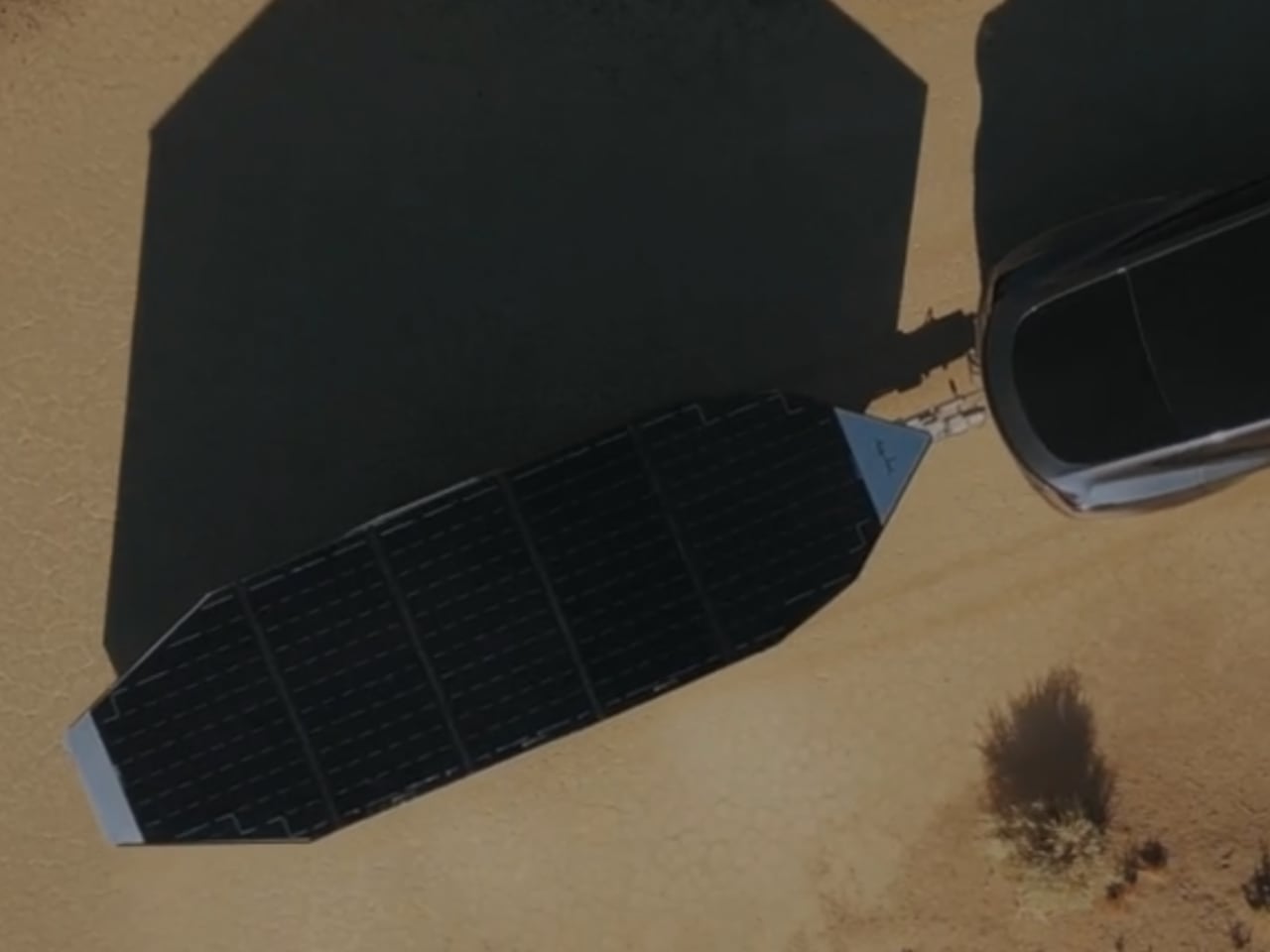
The design of the roof significantly contributes to its aerodynamic performance. The pointed, forward-slanting tip and downward-flowing roof allow air to flow smoothly over the trailer, reducing turbulence and drag. This design enhances aerodynamic efficiency and provides ample headroom inside the camper, creating a spacious and comfortable living environment.
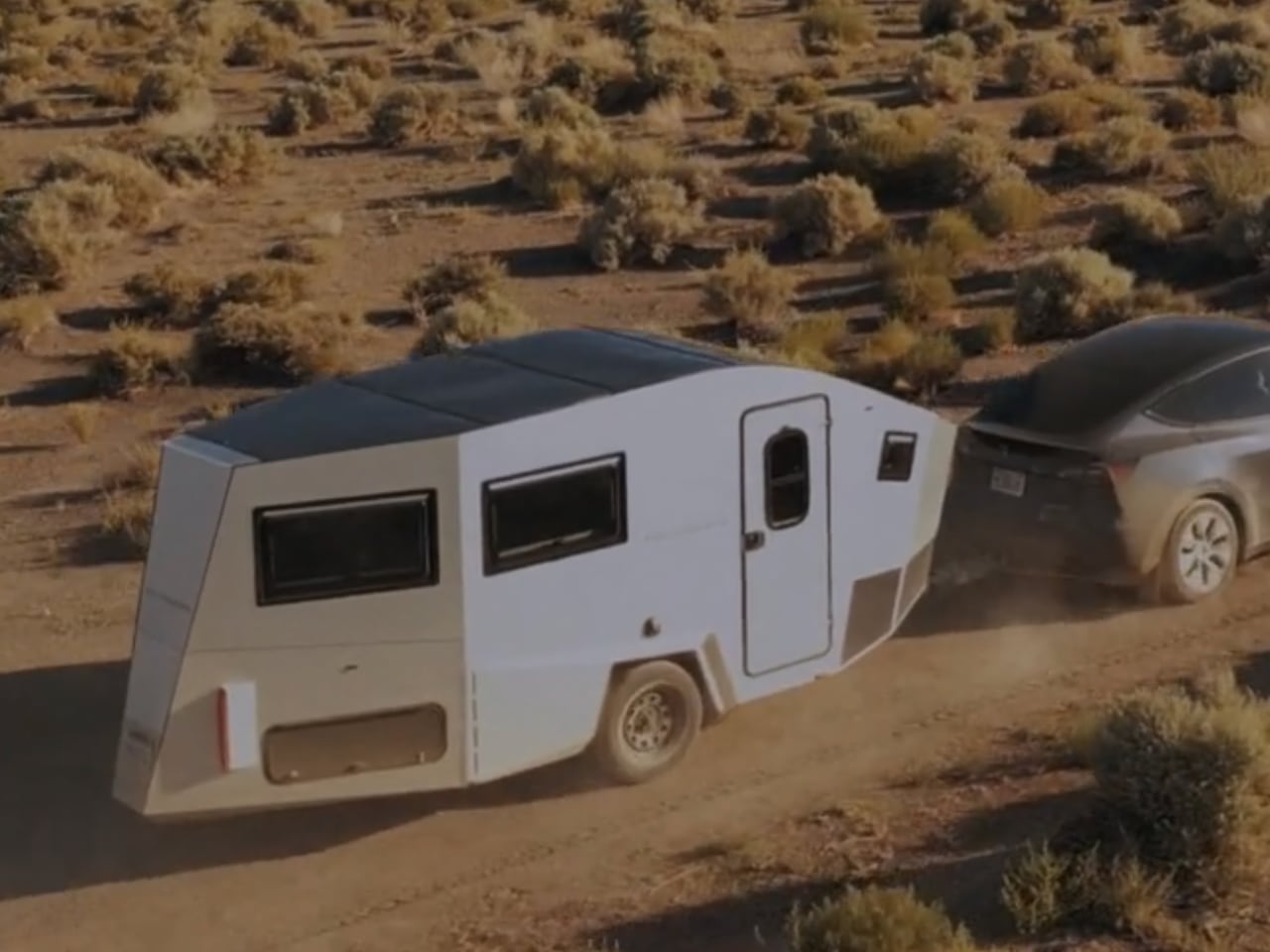
The back of the P21 has a boat tail design that helps control airflow as it leaves the trailer. This feature reduces the turbulence behind the trailer, cutting down on drag and improving overall aerodynamic performance. In Polydrops’ CFD simulations, these design elements make the camper three times more aerodynamically efficient than traditional models.
Interior Design: Practical and Comfortable
The inside of the P21 is just as well-designed as the outside. Polydrops has made use of every inch of space to create a functional and comfortable living area. The interior layout is dictated by the aerodynamic exterior shape, and the designers have done an excellent job of maximizing space while maintaining a sleek, modern look.

The interior features a standable height, allowing occupants to move around freely. The layout includes a convertible lounge that can transform into a dining area or an additional sleeping space. Storage is plentiful, with numerous overhead compartments and under-seat storage options. The interior design maximizes the use of space while maintaining a clean and uncluttered look. The materials used are lightweight yet durable, ensuring that the camper remains easy to tow without compromising strength and stability.
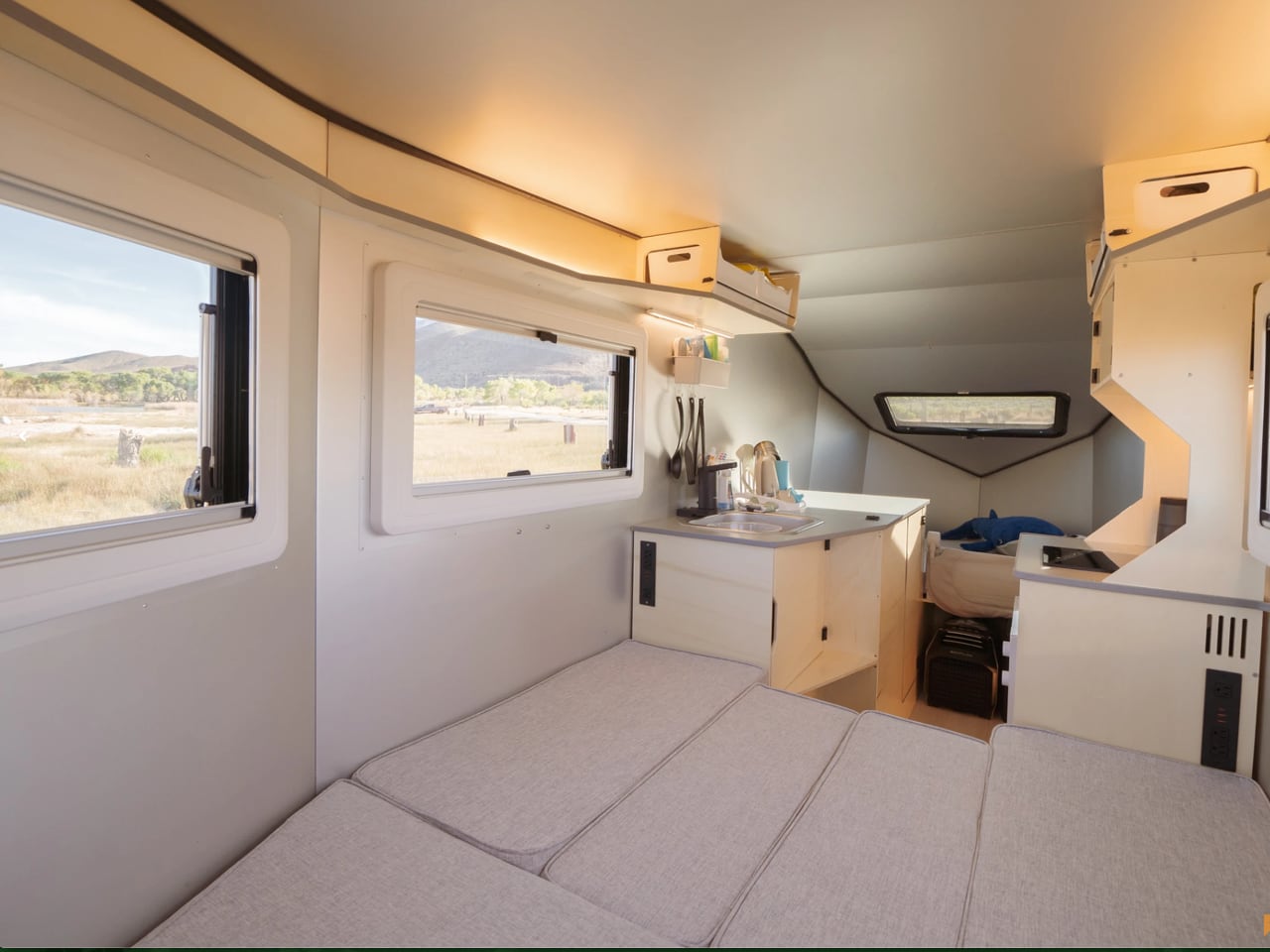
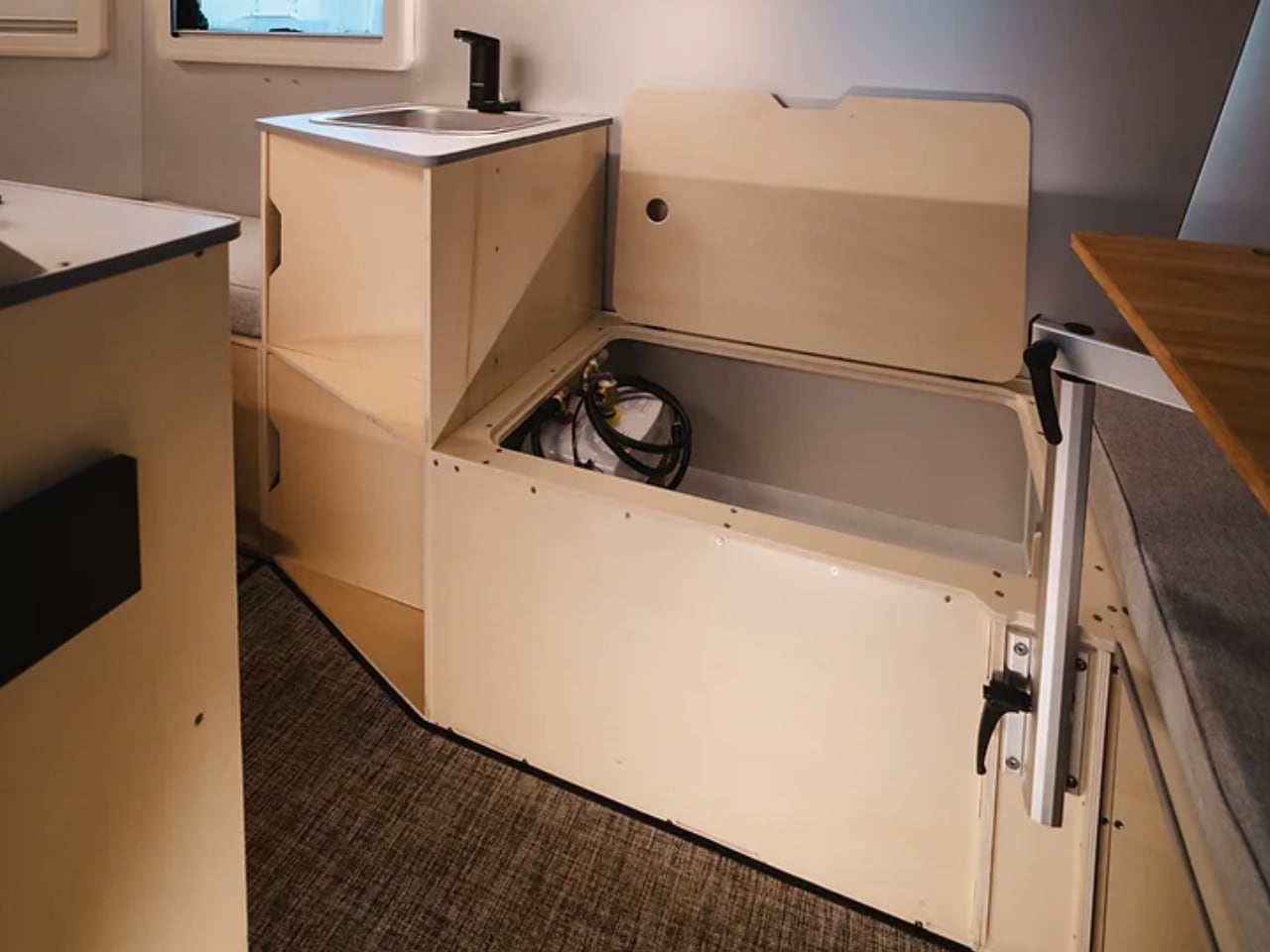
Maximize your off-grid adventures with the P21’s Sanitation Unit upgrade. Enjoy the convenience of a sink, shower, and portable toilet featuring 9 gallons of fresh water and a 1.3-gallon water heater tank. The shower cleverly converts into a lounge area when closed, providing luxurious comfort even in remote locations.
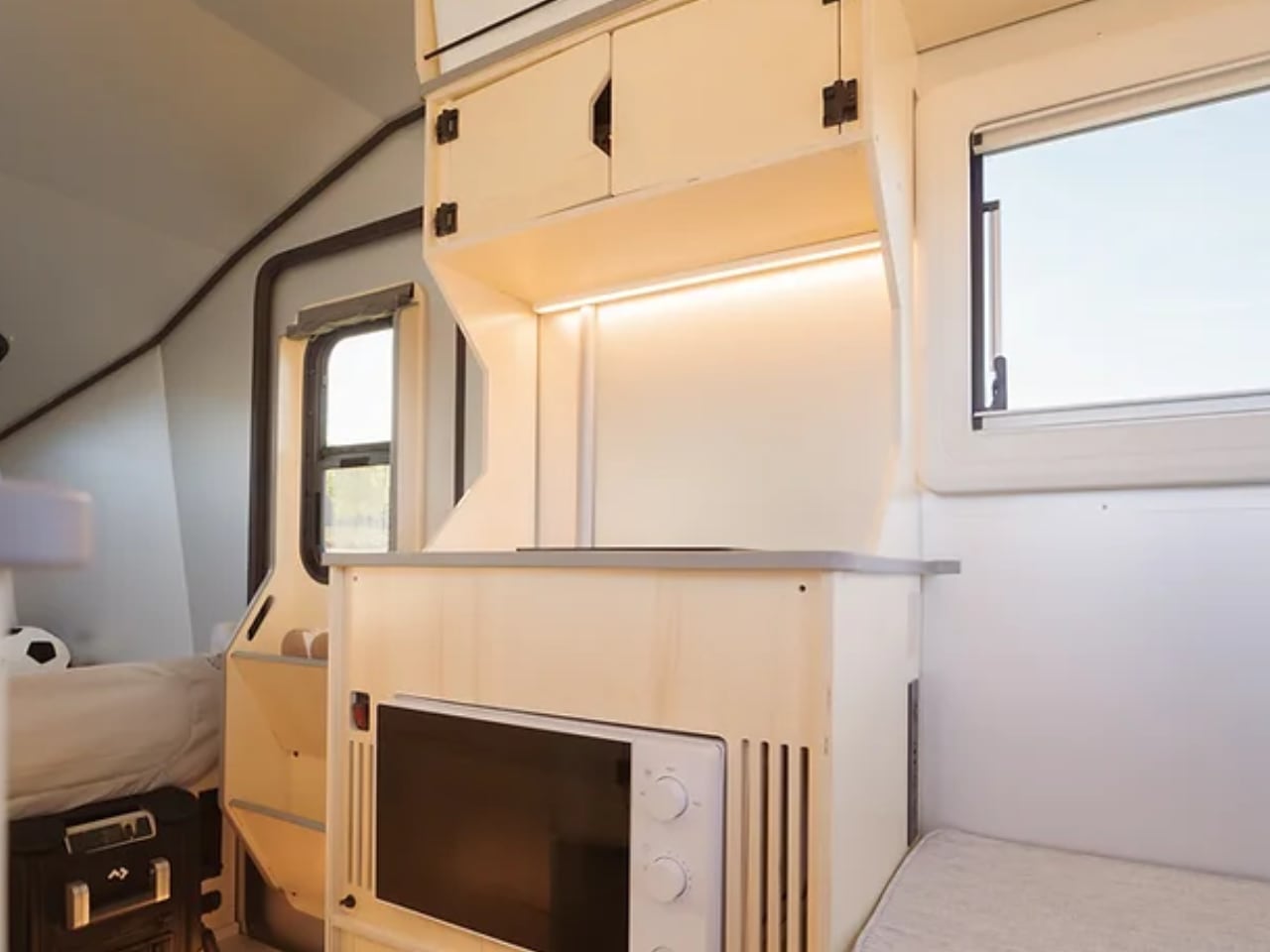
Cooking station

Refrigerator
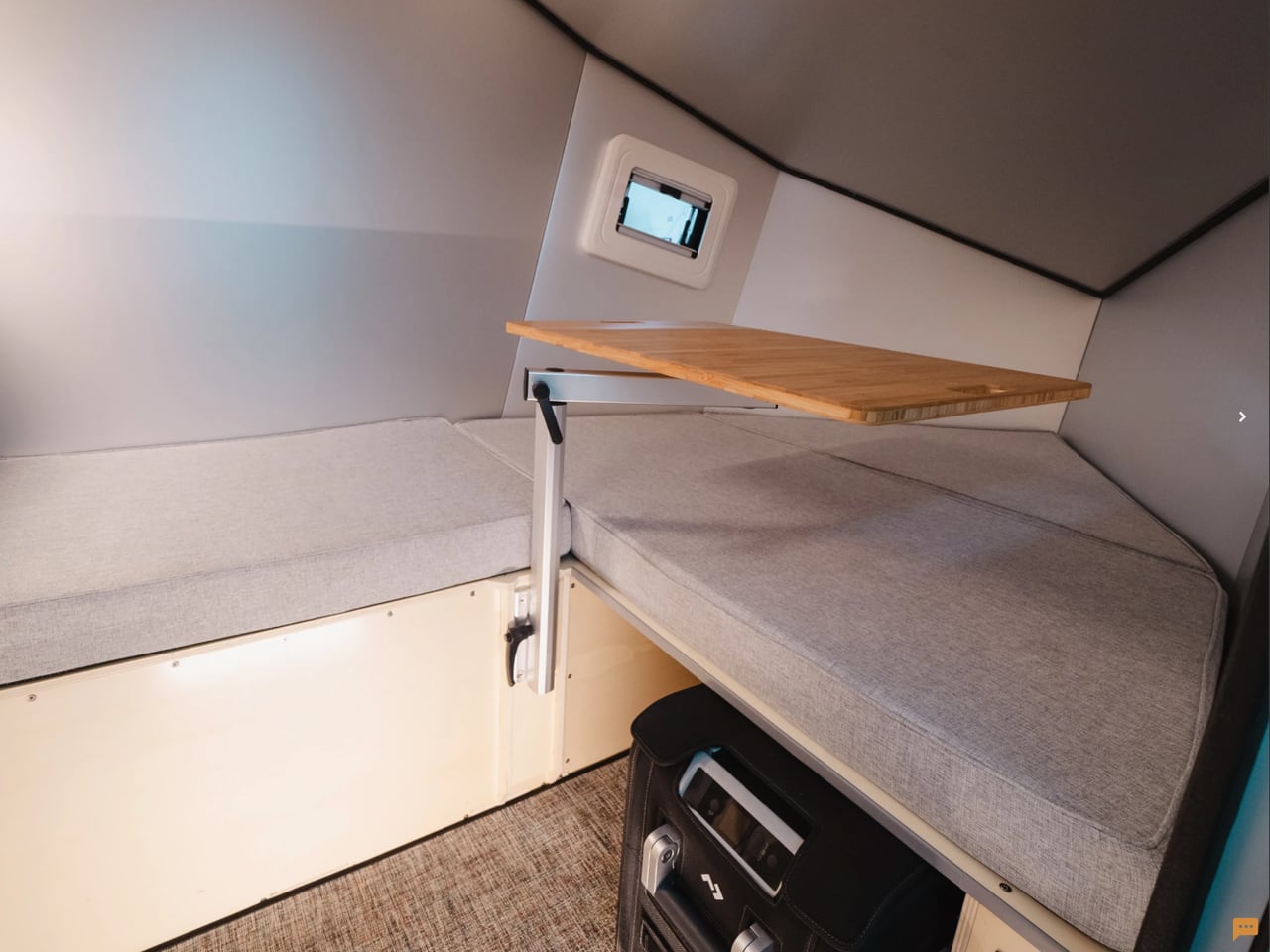
Key Features and Innovations
The P21 features a best-in-class Timbren independent suspension system, which ensures a smooth and comfortable ride on all types of terrain. This suspension system offers excellent stability and minimizes vibration, making it ideal for rough or uneven roads. Additionally, the lightweight construction of the P21 improves fuel efficiency and lowers travel expenses. Its rust-free aluminum frame ensures durability and longevity.

The P21 includes a simple control system. Equipped with a user-friendly 7-inch display, the P21 allows straightforward control and monitoring of all systems. The intuitive interface and remote control capability make monitoring the electrical system and other features easy, enhancing the overall user experience. The system seamlessly connects to your smartphone, allowing for convenient remote control accessibility.
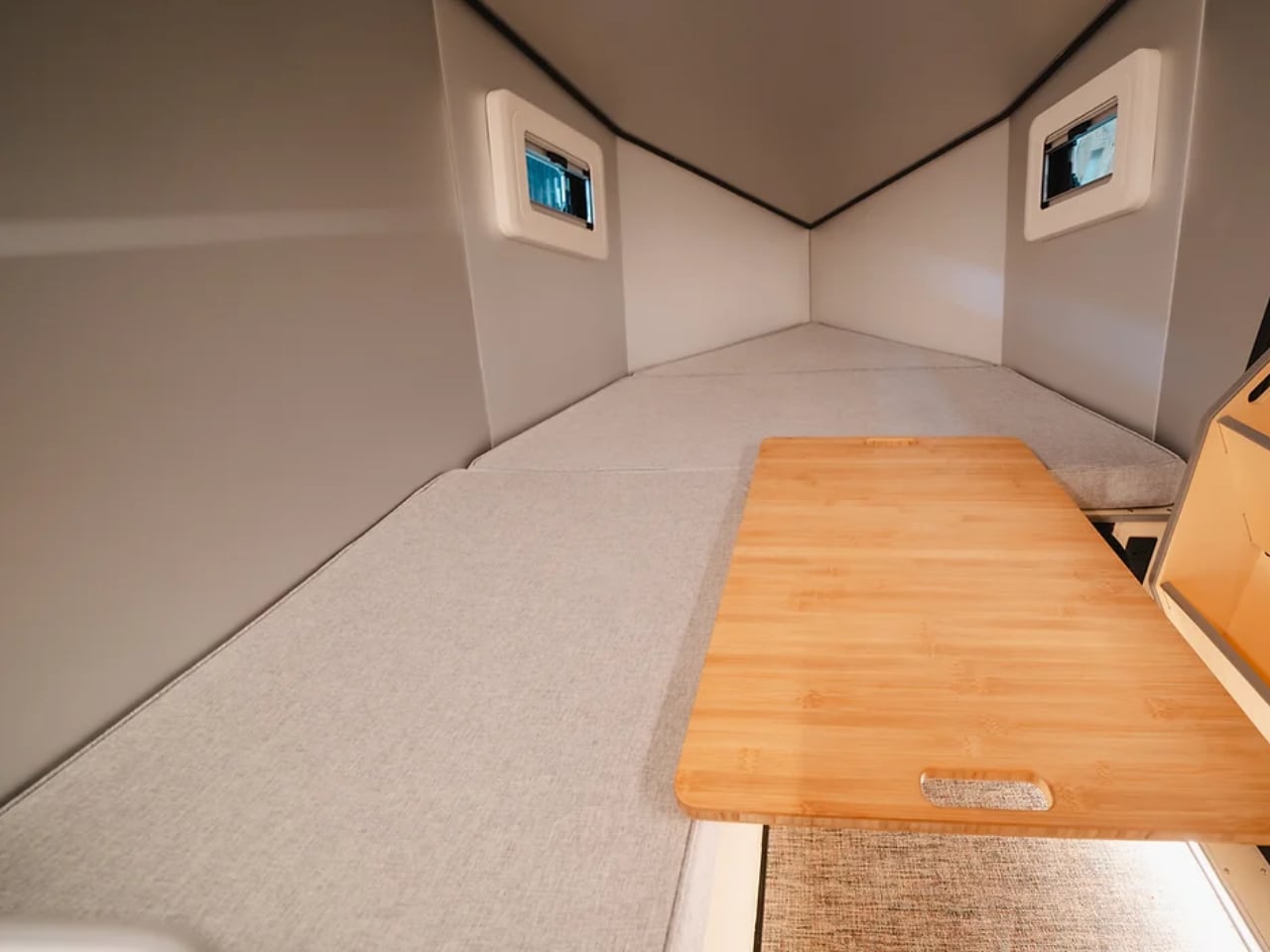
Kid’s bed
The interior layout includes a queen-size bed and an optional kids’ bed, making it ideal for families. The galley is split into two sections, with a sink and countertop on one side and space for a cooktop on the other. There is also a convertible shower with a hidden toilet, similar to those found in high-end campervans. This thoughtful design ensures that the P21 meets the needs of modern travelers while maintaining a compact and efficient layout.
Solar Charging: Harnessing the Power of the Sun
One of the P21’s most impressive features is its advanced solar charging capabilities. The integrated 1300W solar panels efficiently convert sunlight into energy, providing a sustainable power source for the camper. This system ensures you can stay off the grid for extended periods without worrying about running out of power. The solar panels are seamlessly integrated into the design, maintaining the sleek and aerodynamic profile of the P21 while offering significant energy savings.
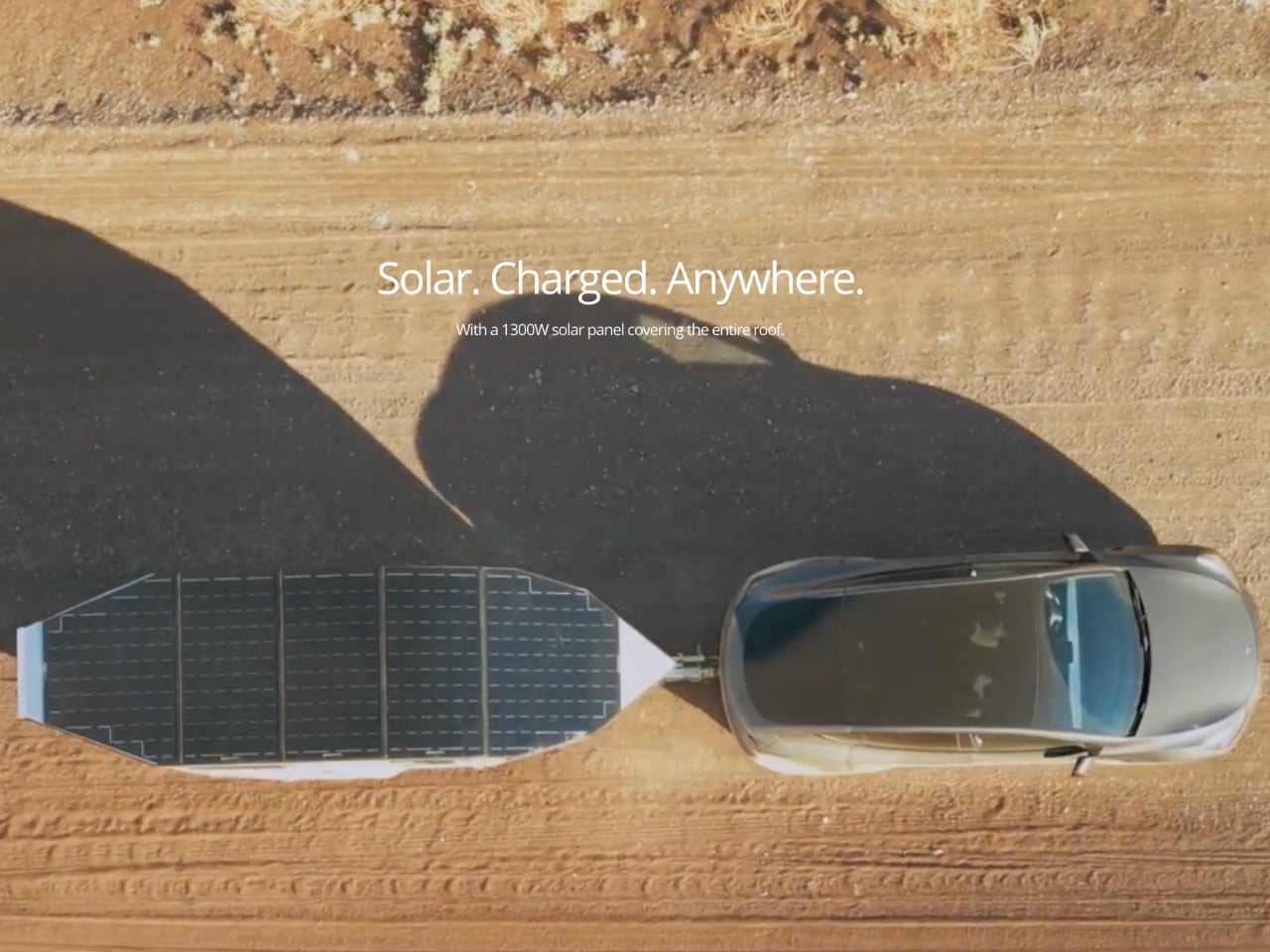
The solar charging system works in tandem with the all-electric setup, including the LFP battery and climate control system. This combination provides reliable power for all onboard systems, ensuring a comfortable and convenient camping experience. Whether parked in a sunny meadow or a shaded forest, the P21’s solar panels will keep you powered up and ready for adventure.
The Polydrops P21 is a futuristic camper that offers practical functionality. Its aerodynamic exterior, advanced solar charging capabilities, and comfortable interior make it an ideal choice for modern travelers. With features like a rust-free frame, lightweight construction, and a best-in-class suspension system, the P21 is built to handle any adventure. Whether you’re exploring remote landscapes or enjoying a weekend getaway, the P21 promises a unique camping experience. Polydrops continues to push the boundaries of what a camper can be, and the P21 is a shining example of their innovative approach.
The post Explore Cutting-Edge Aerodynamics with the Polydrops P21: A Camper for the Future first appeared on Yanko Design.
